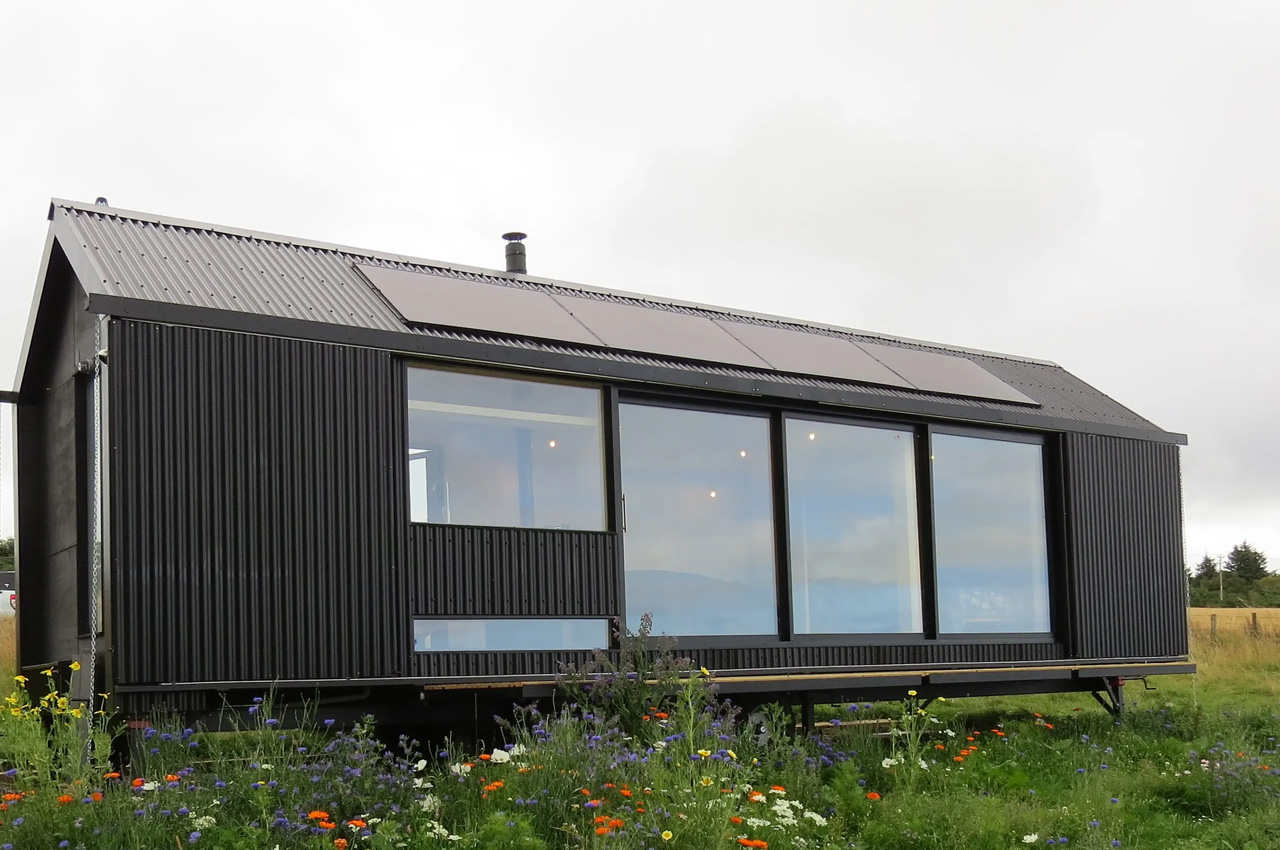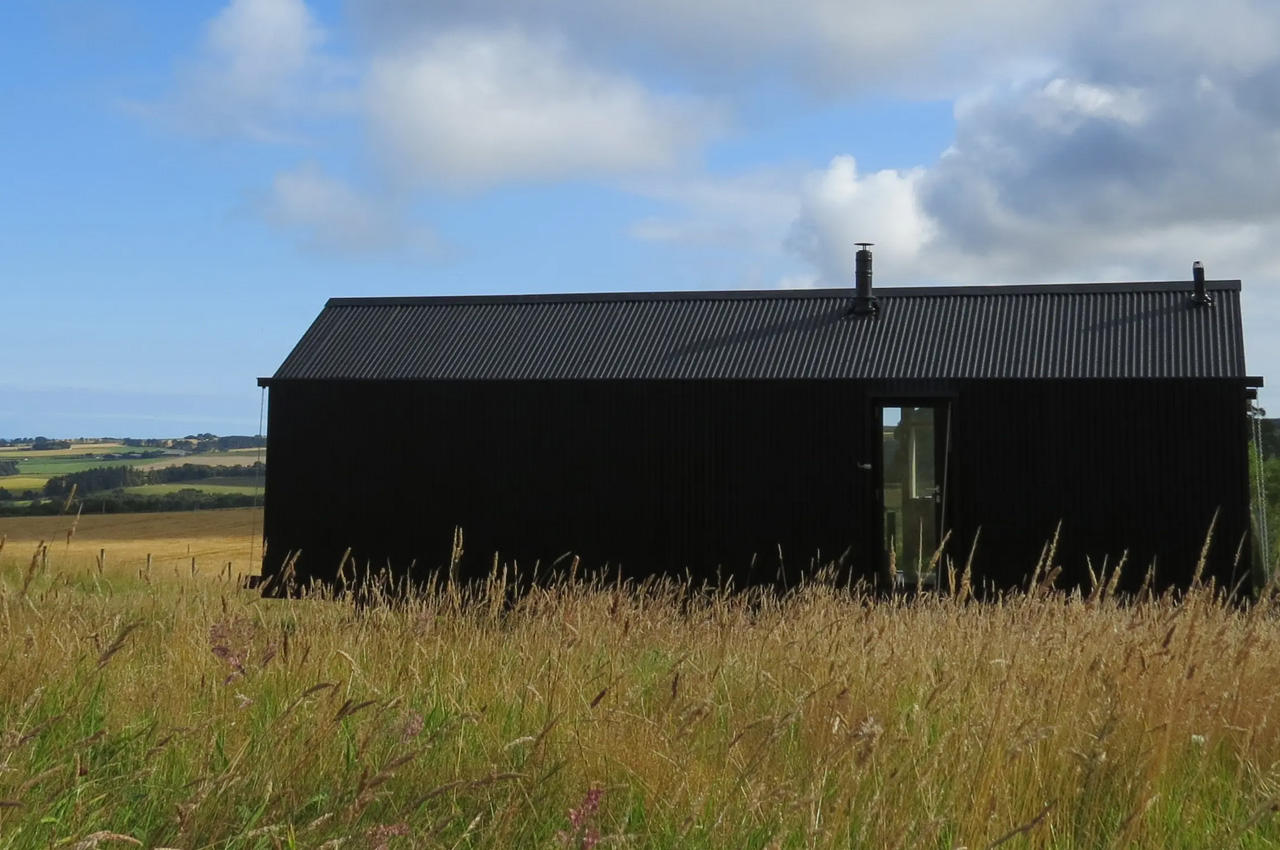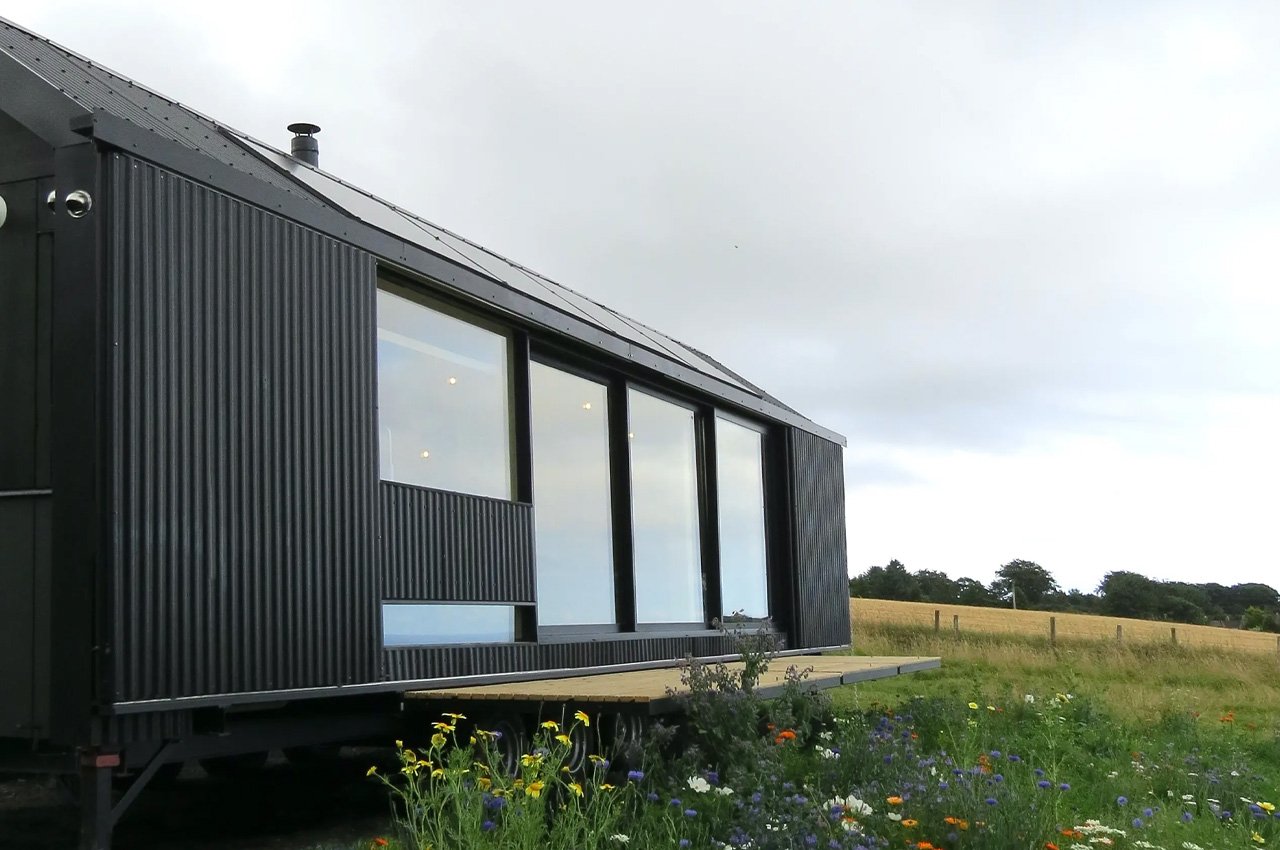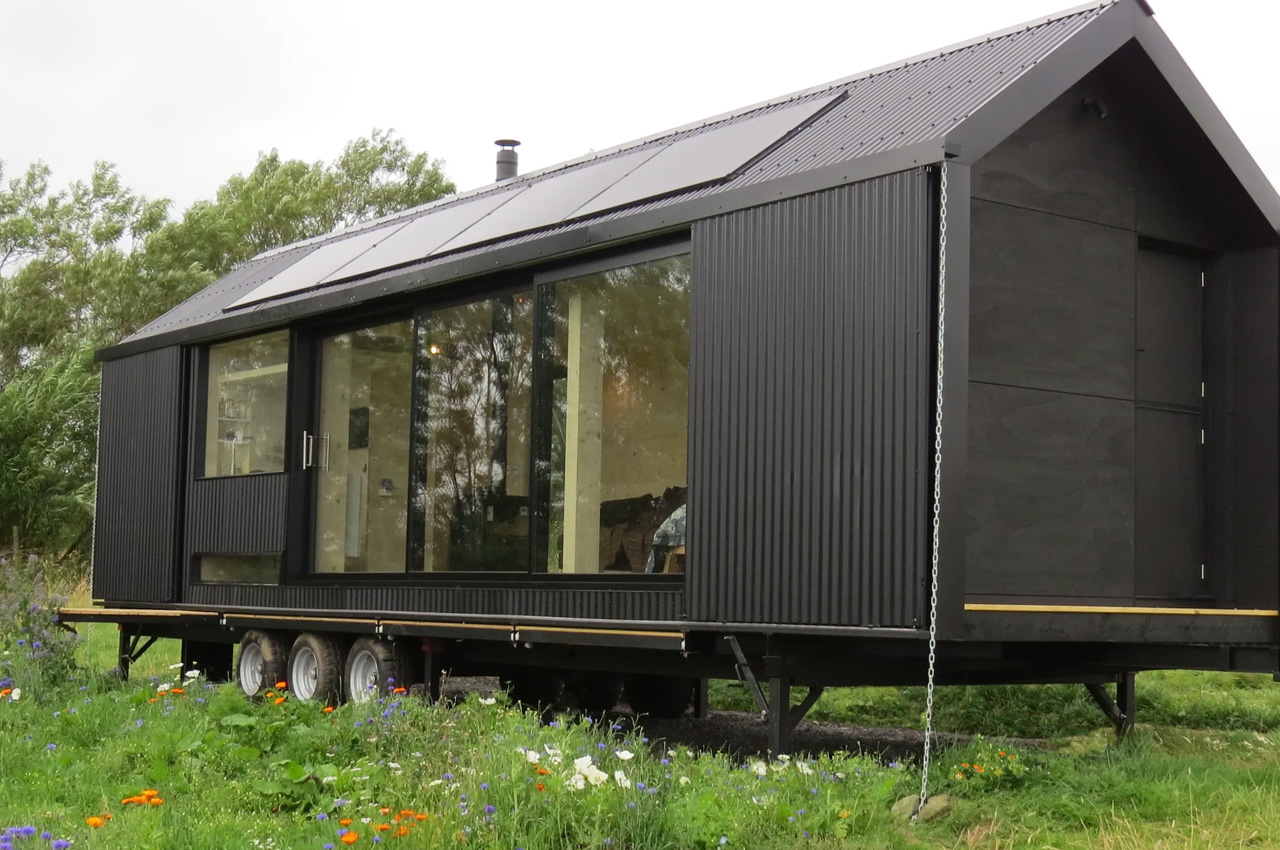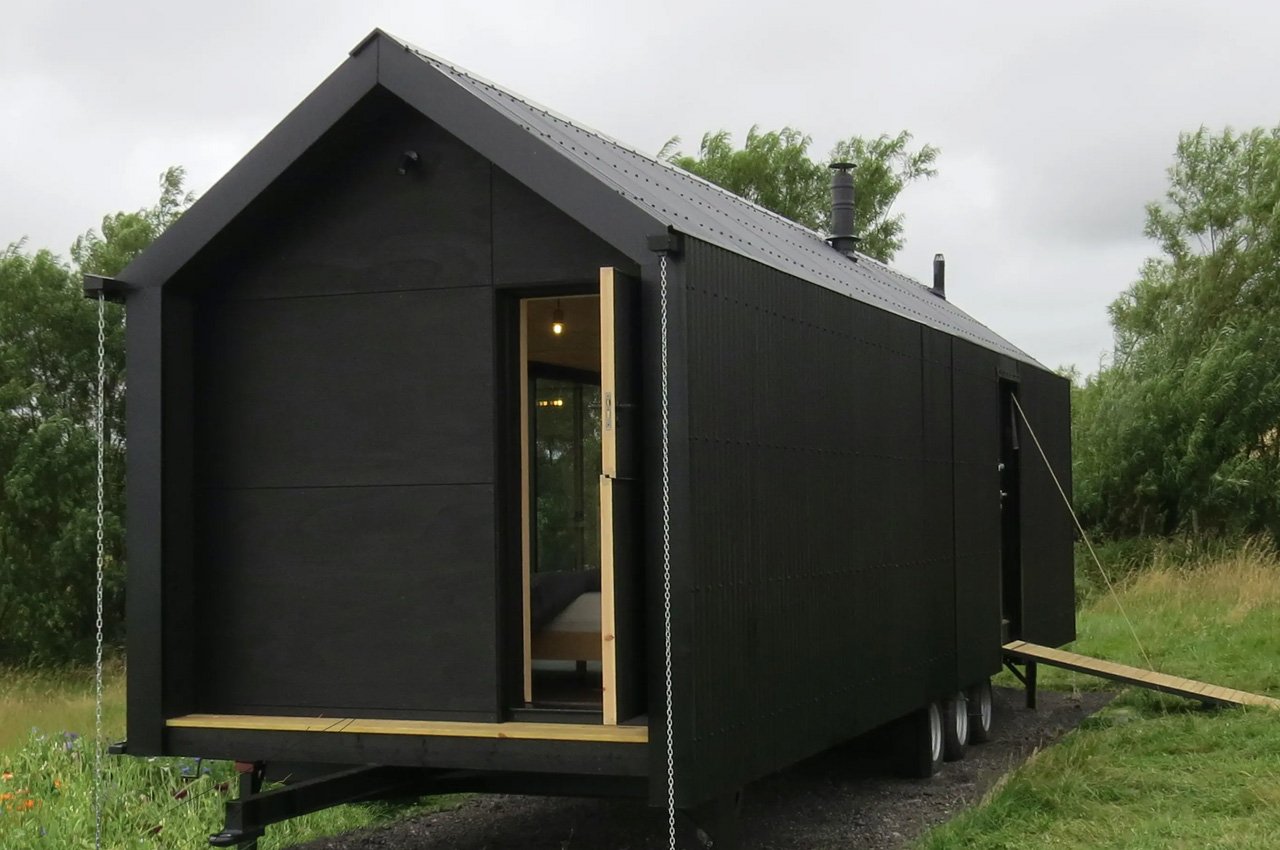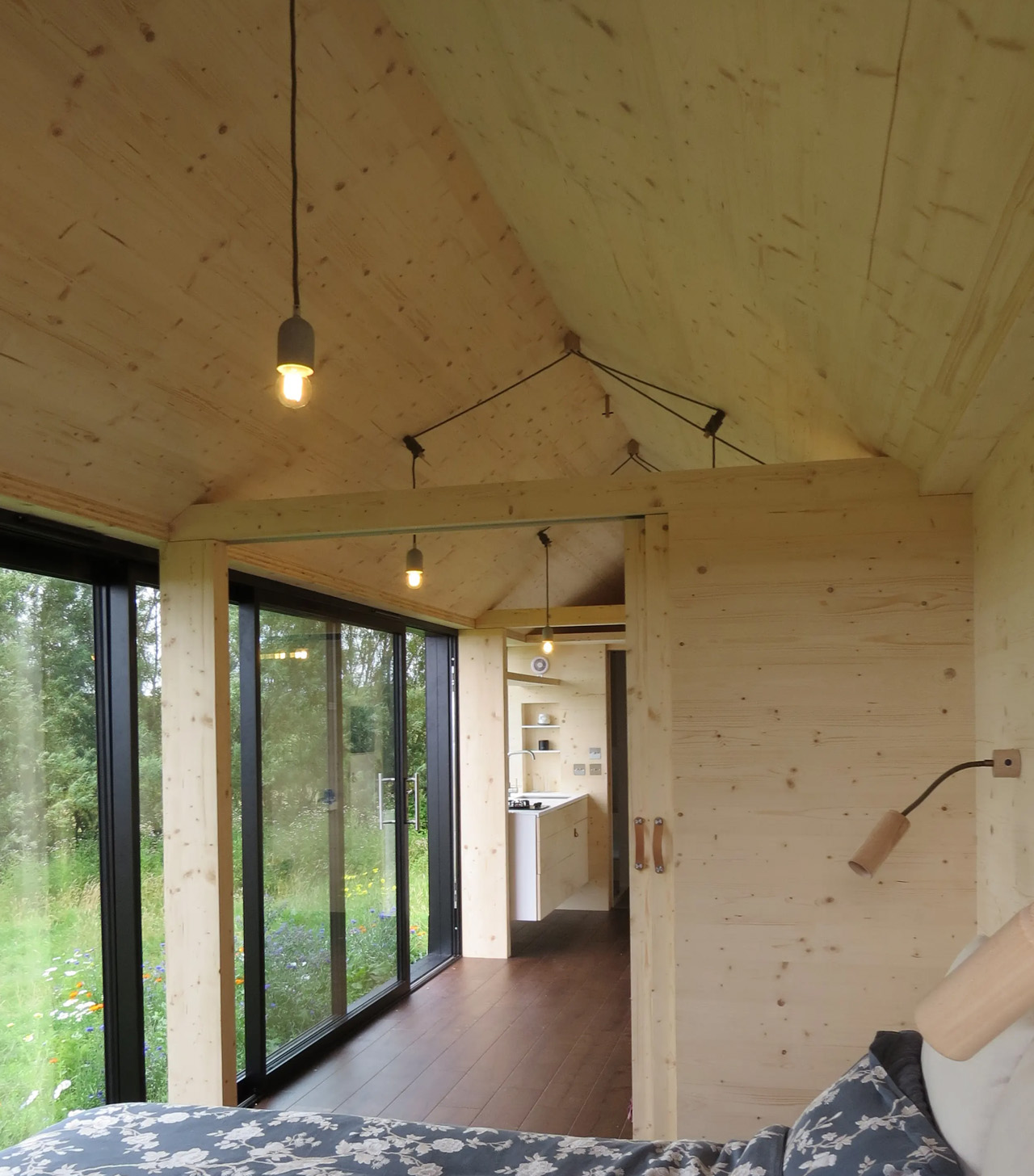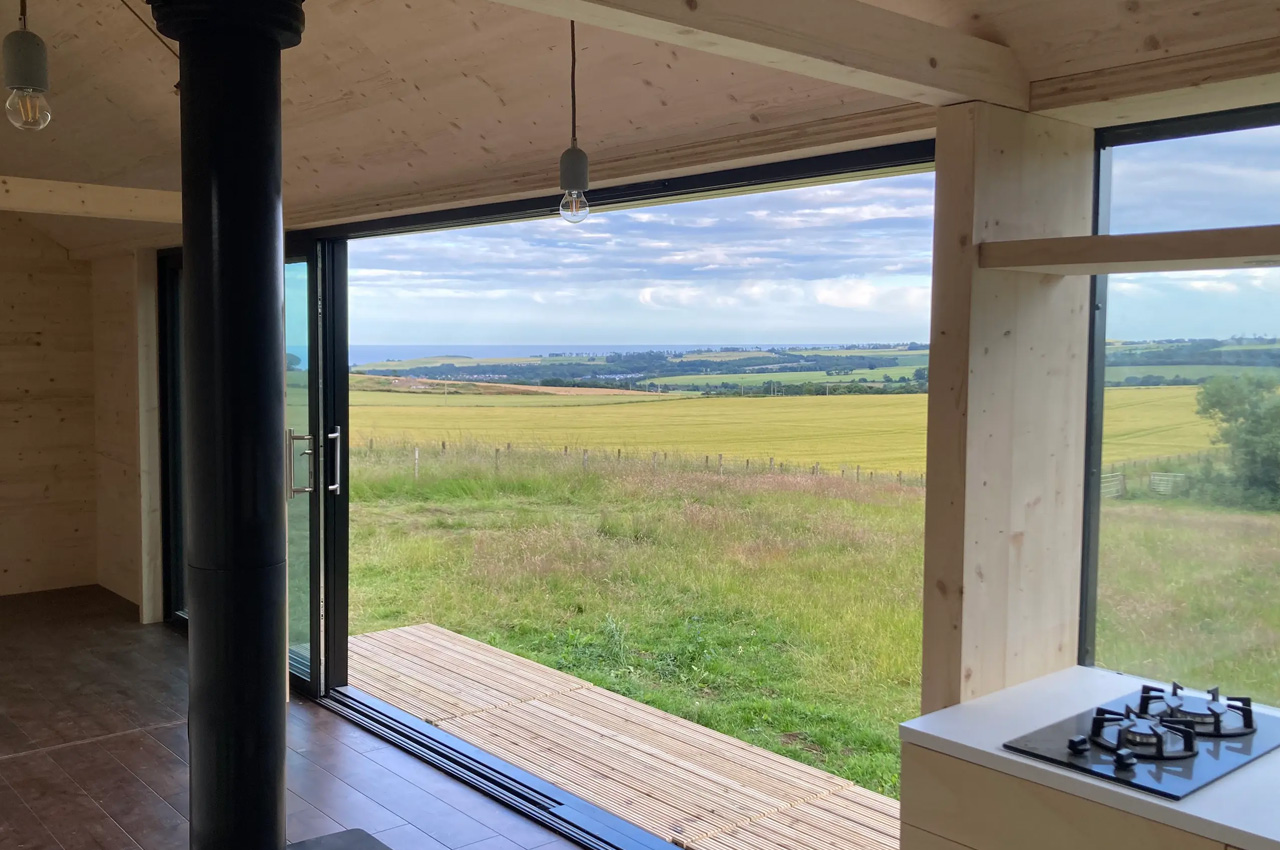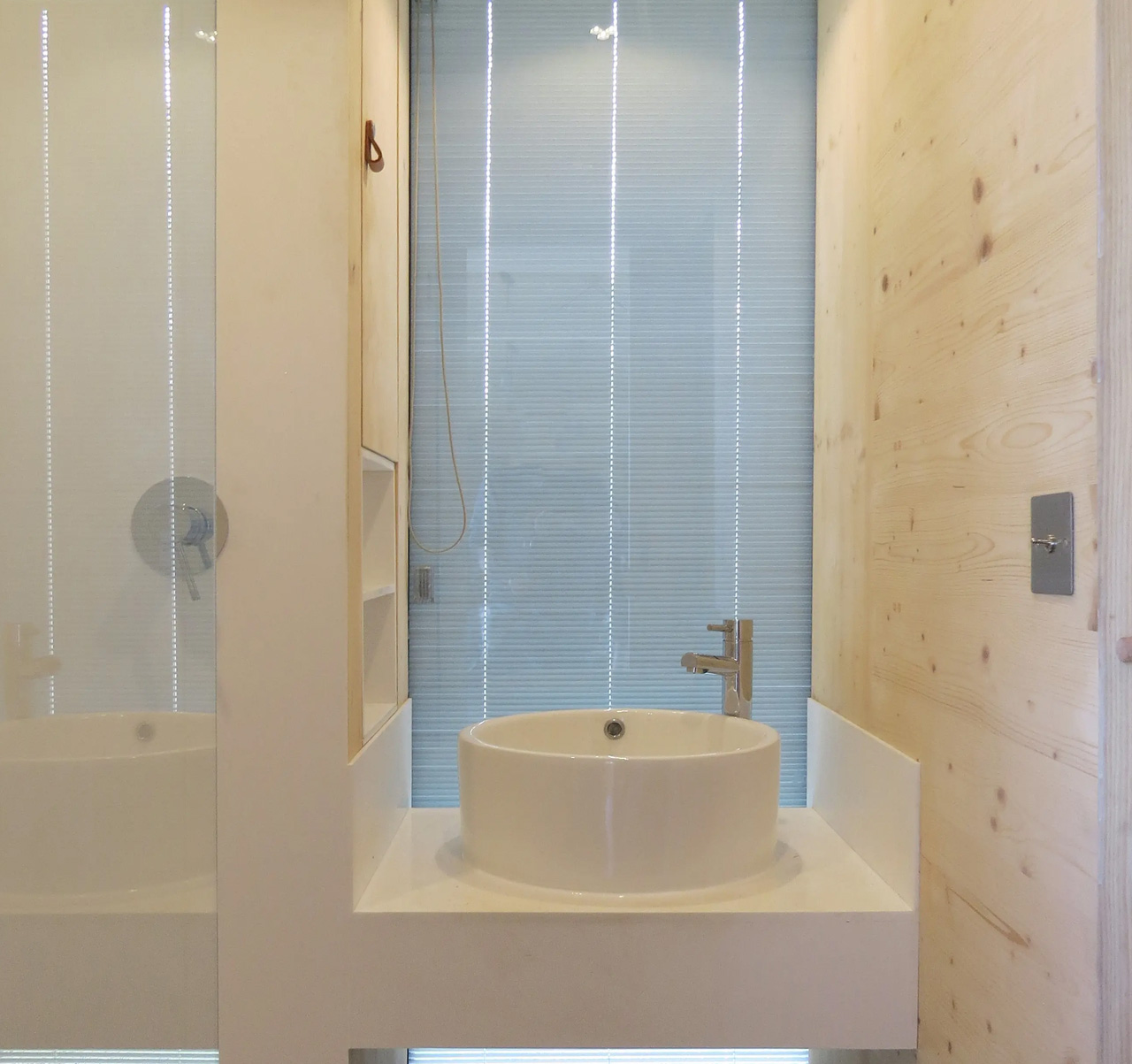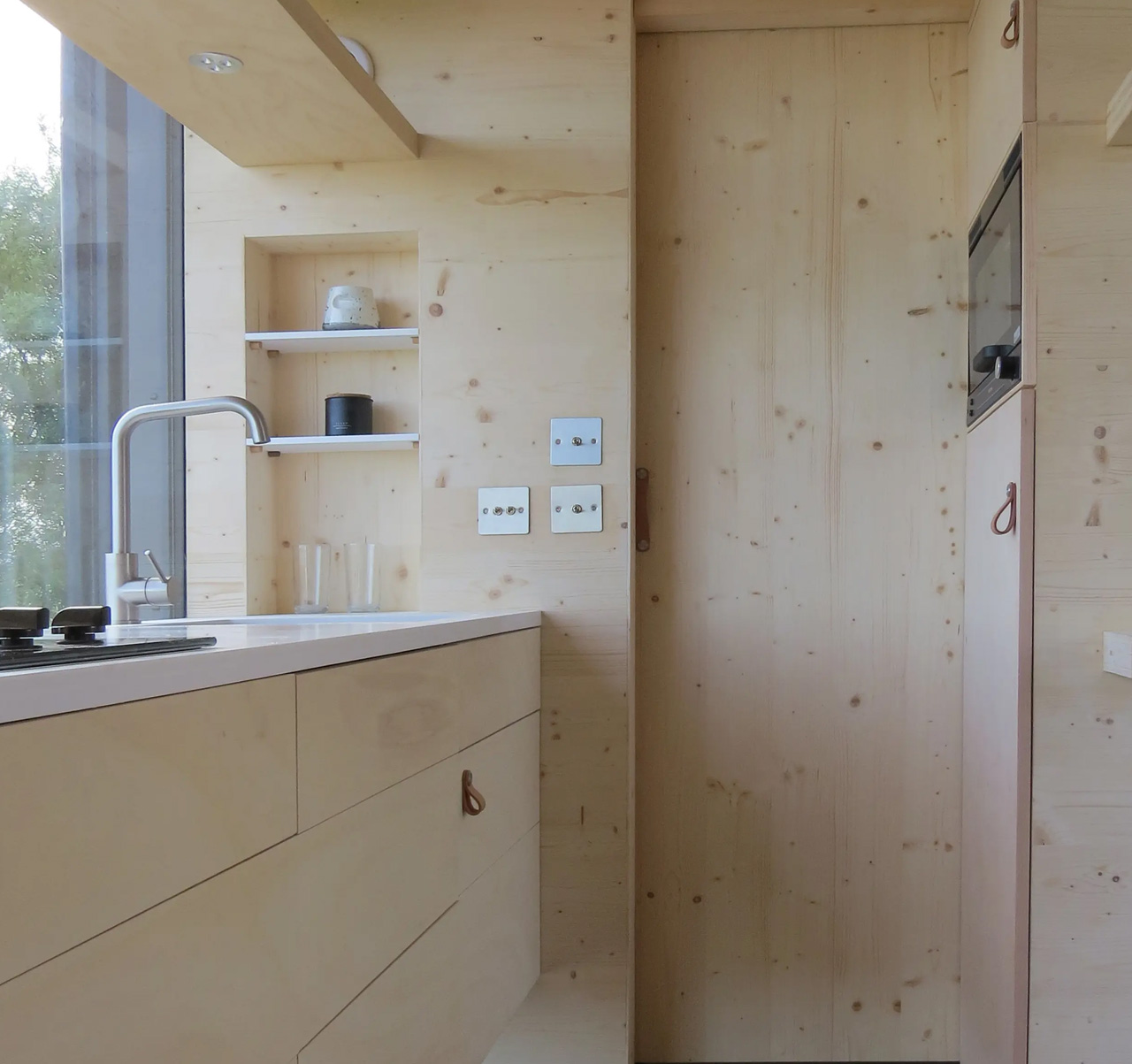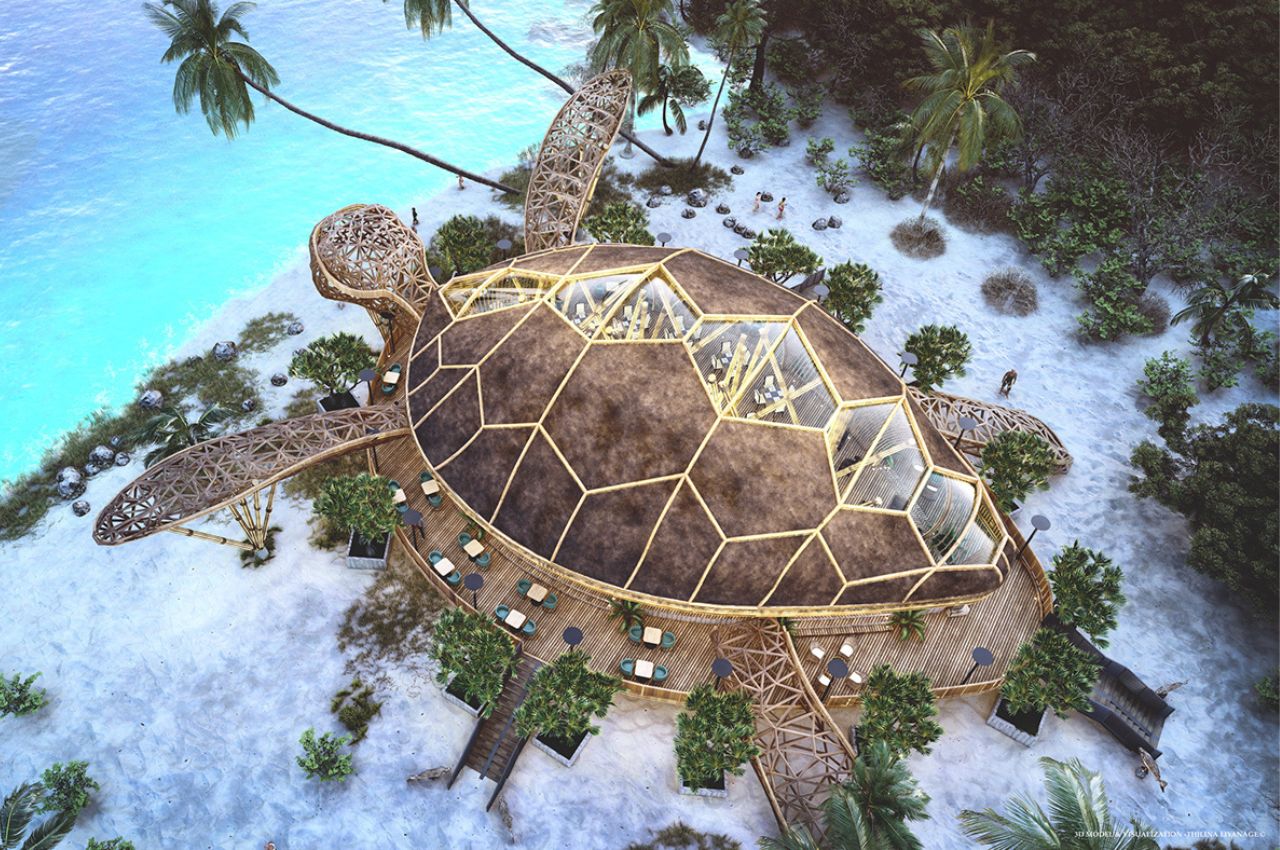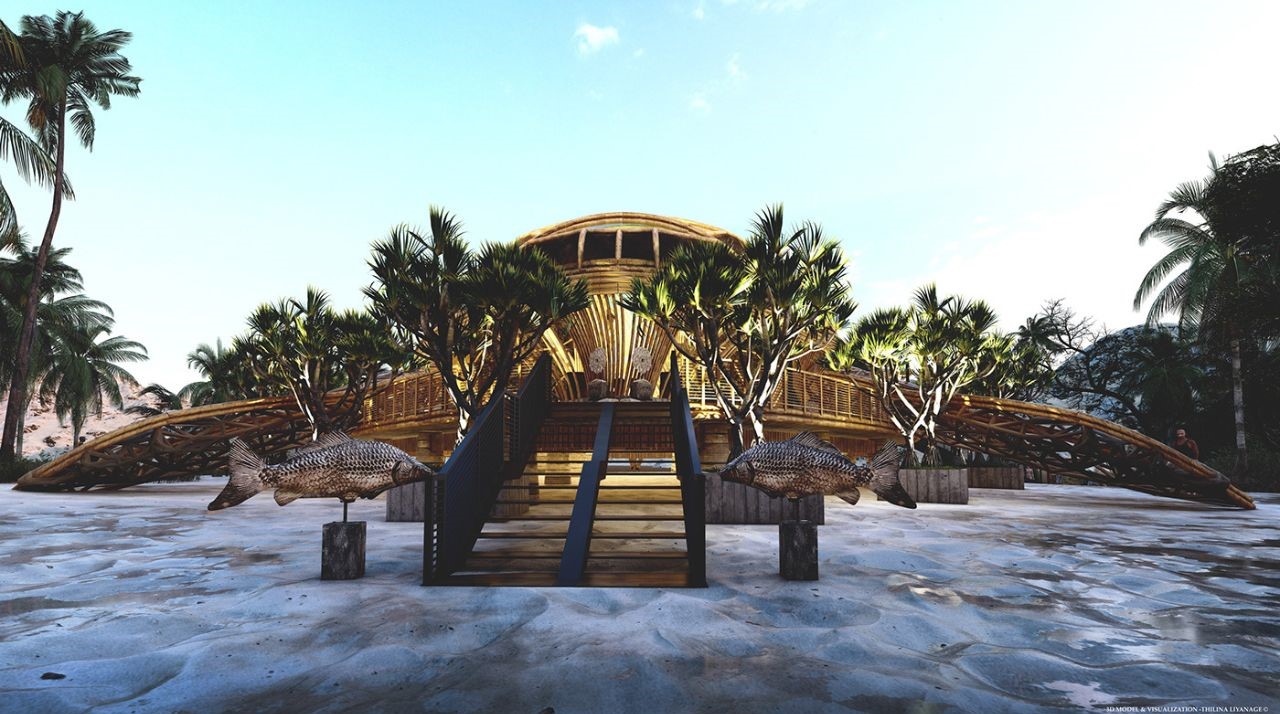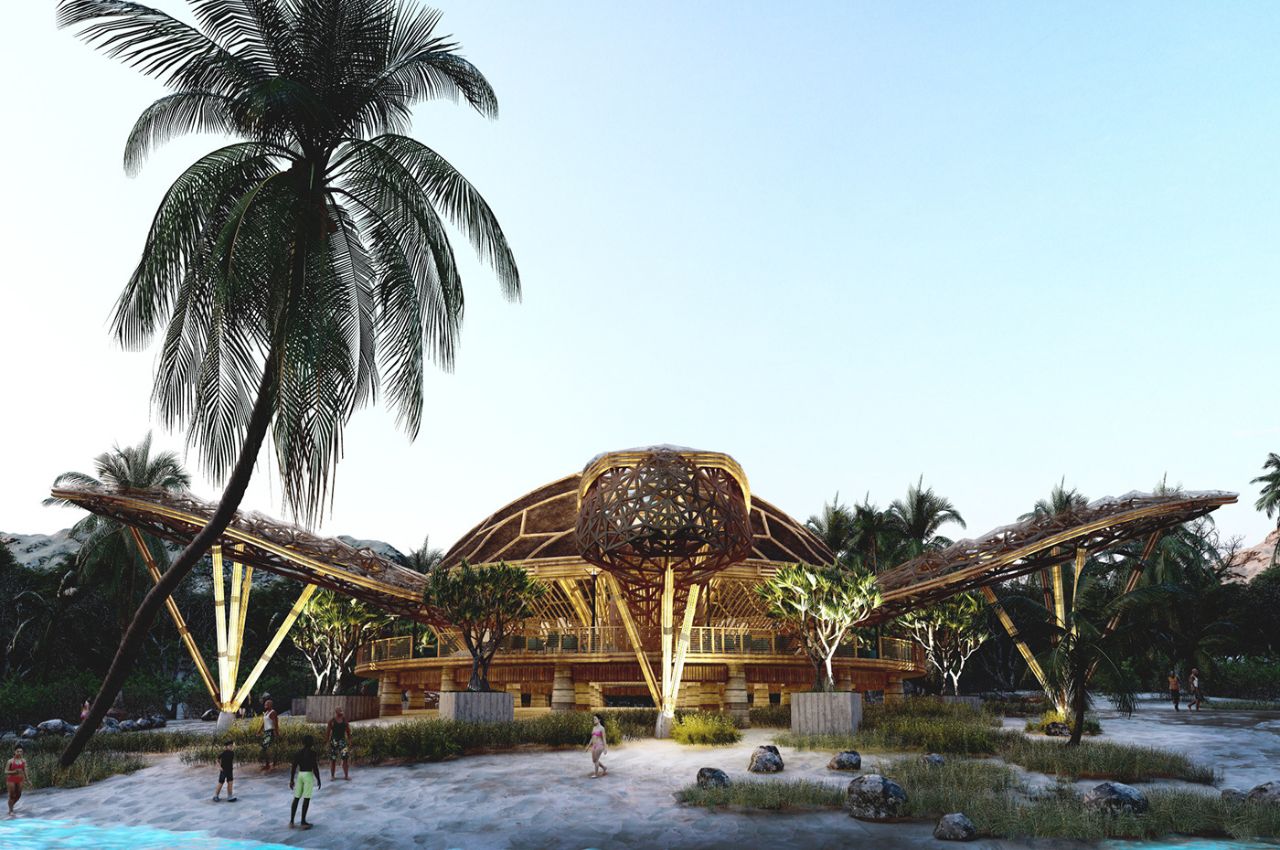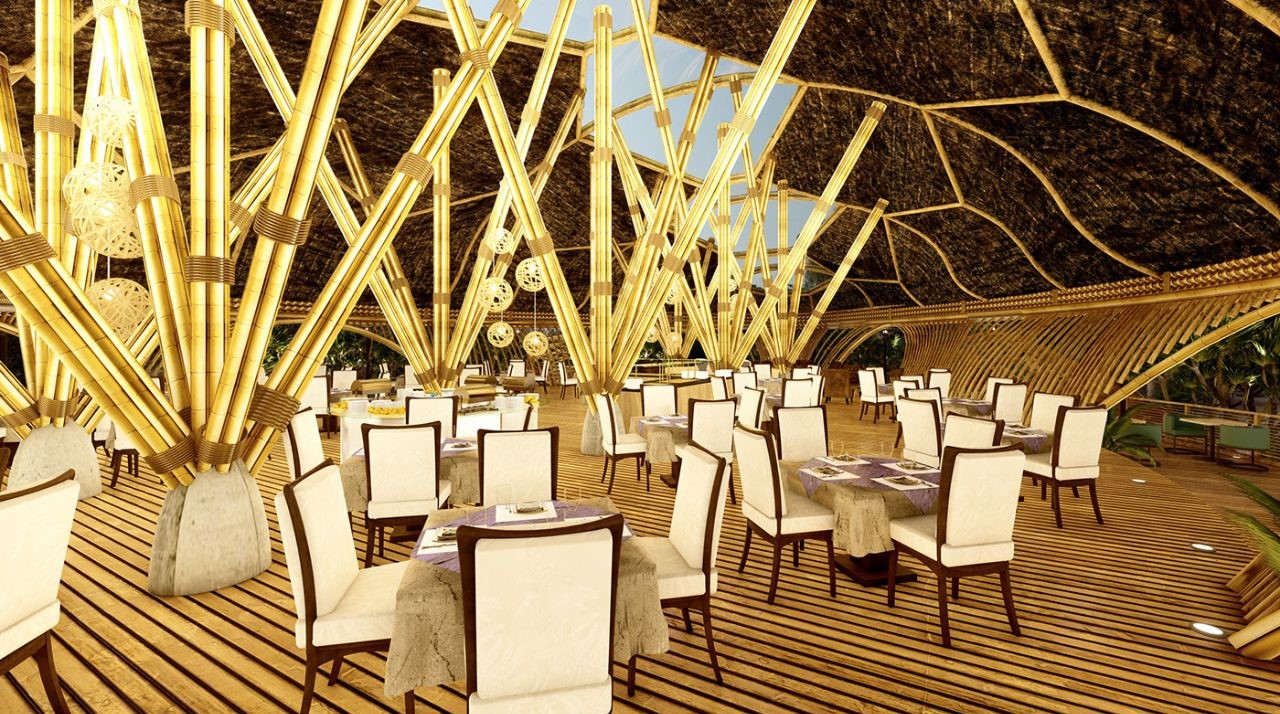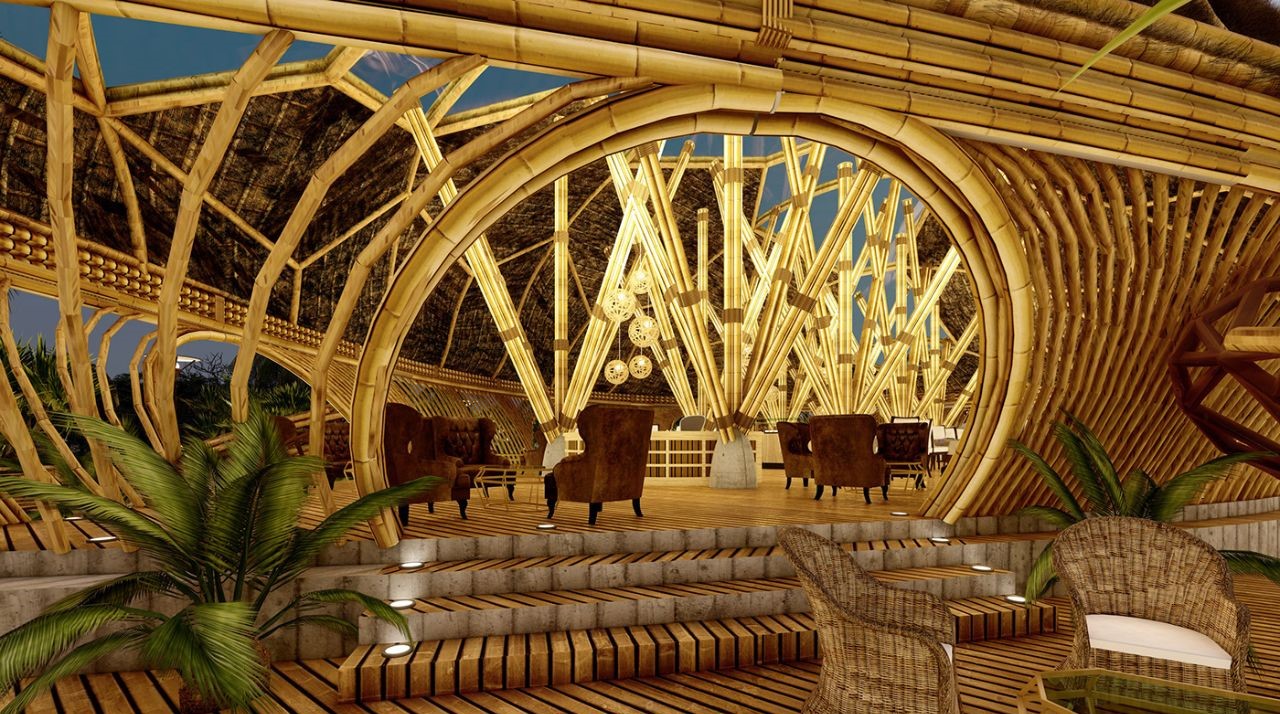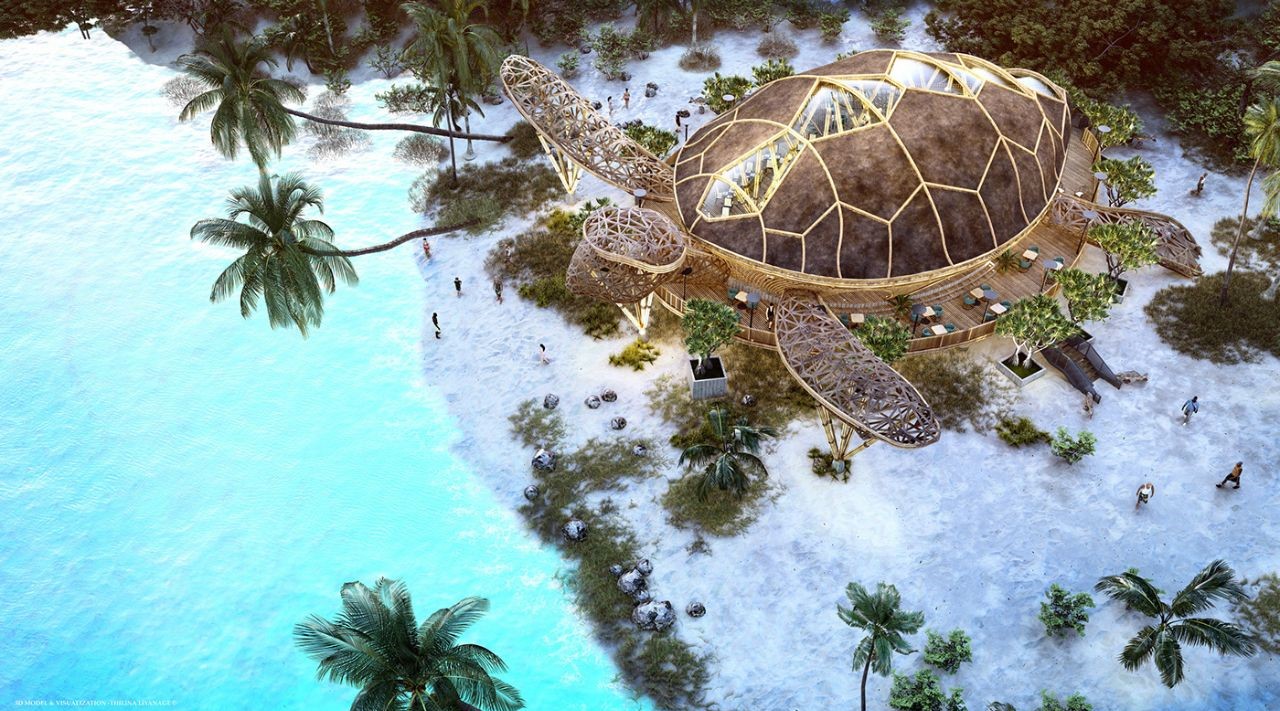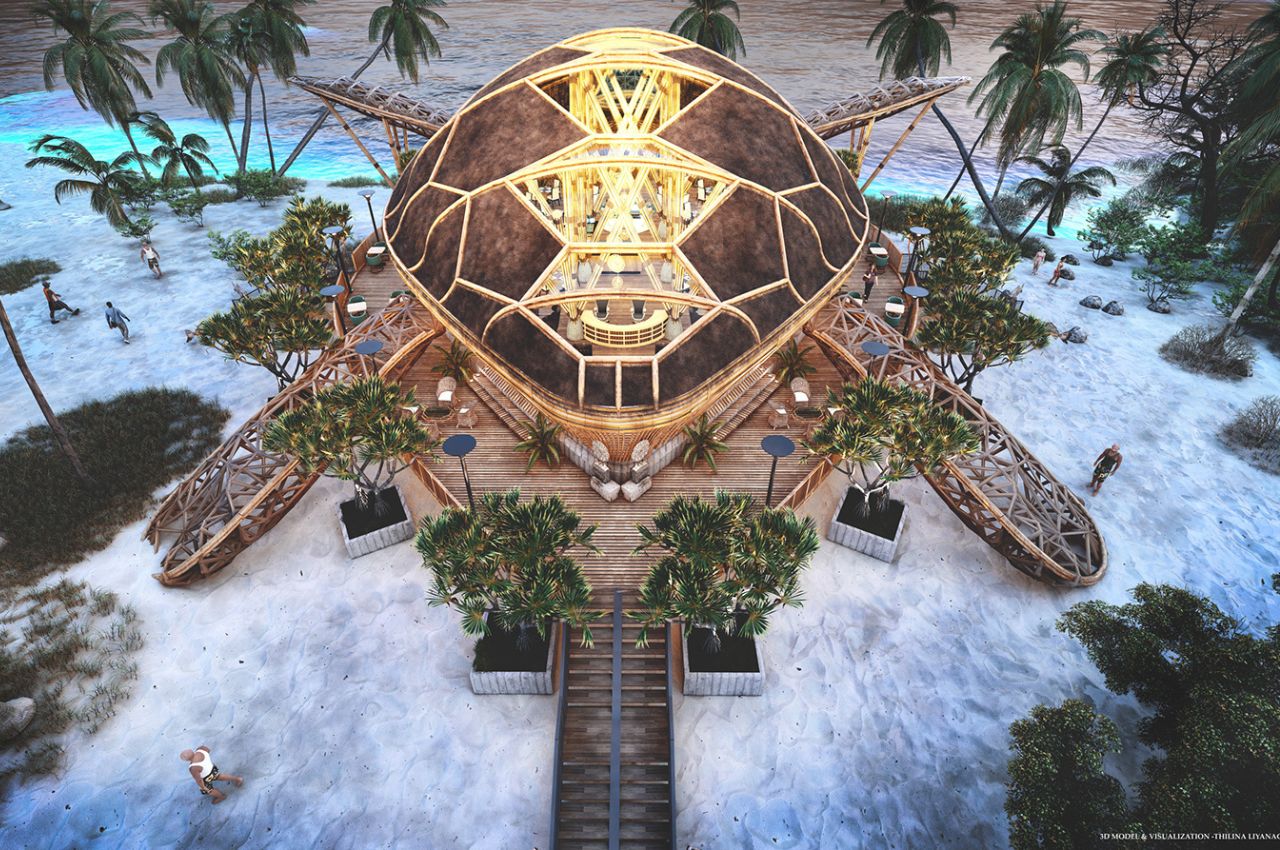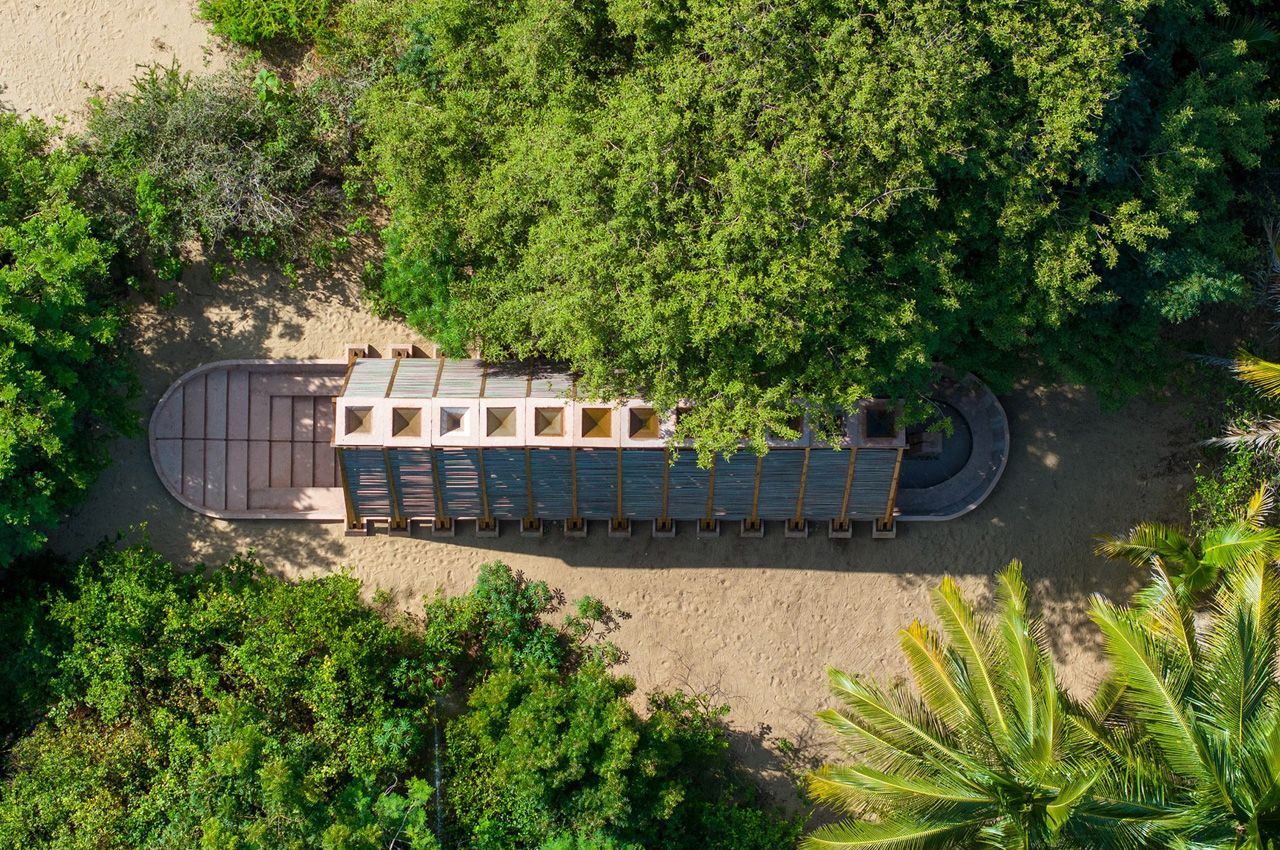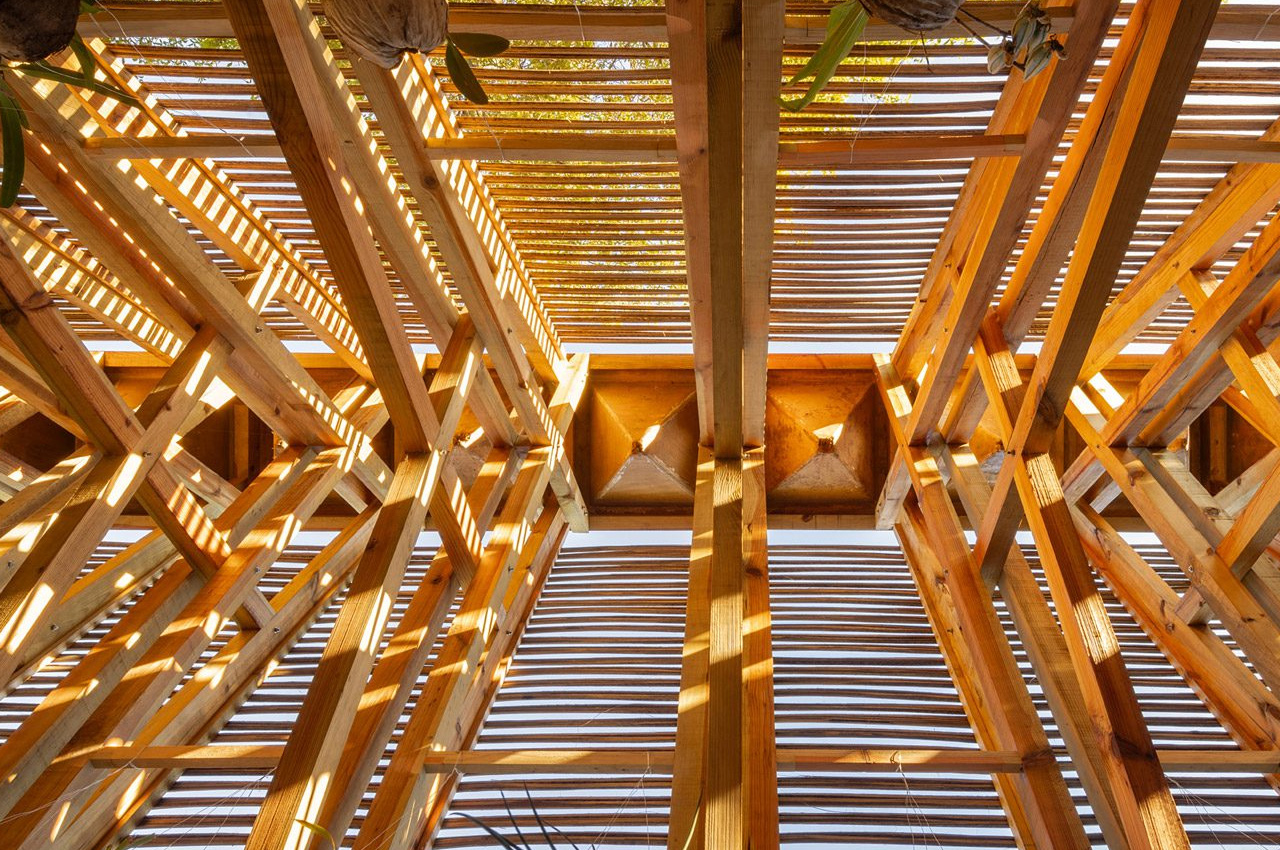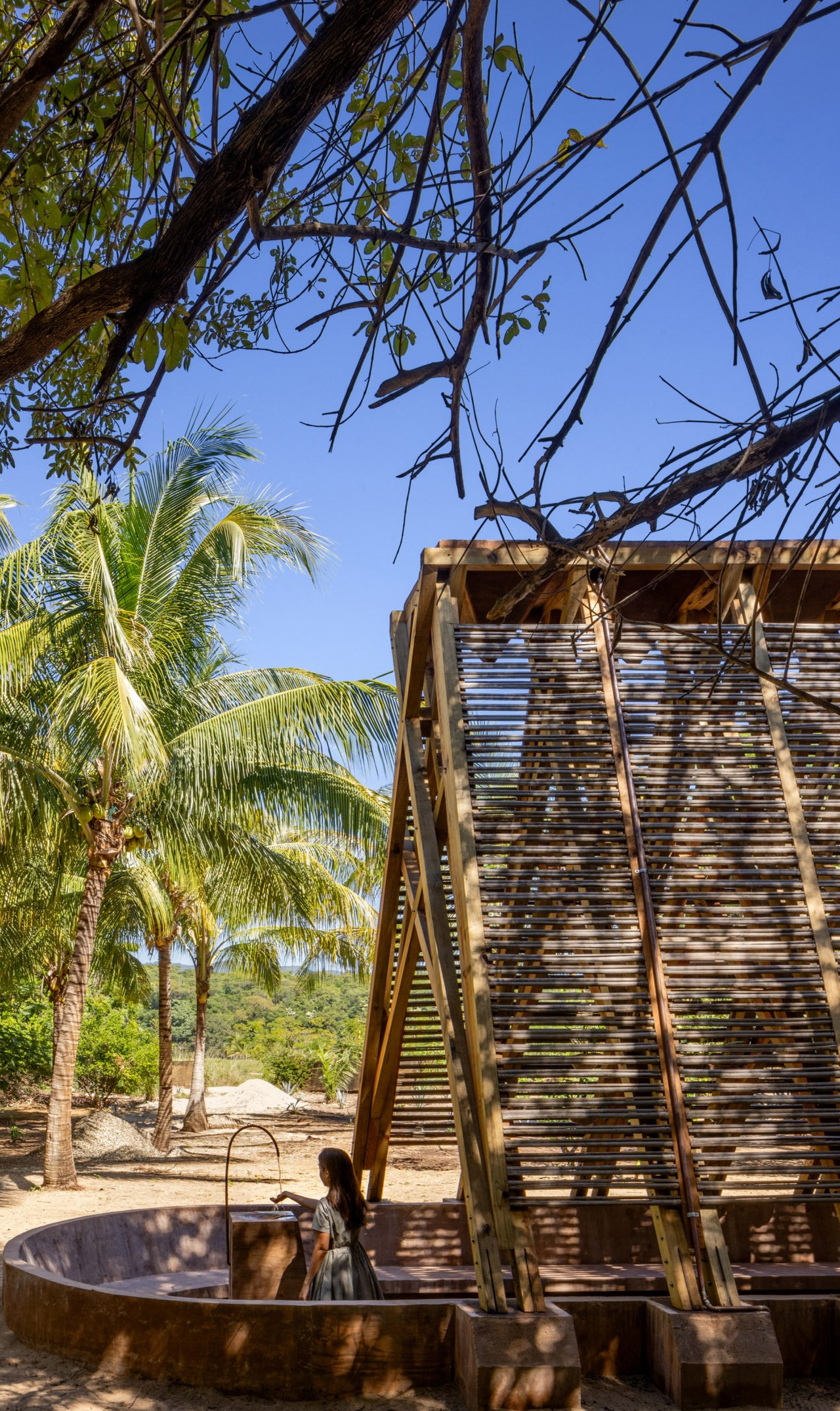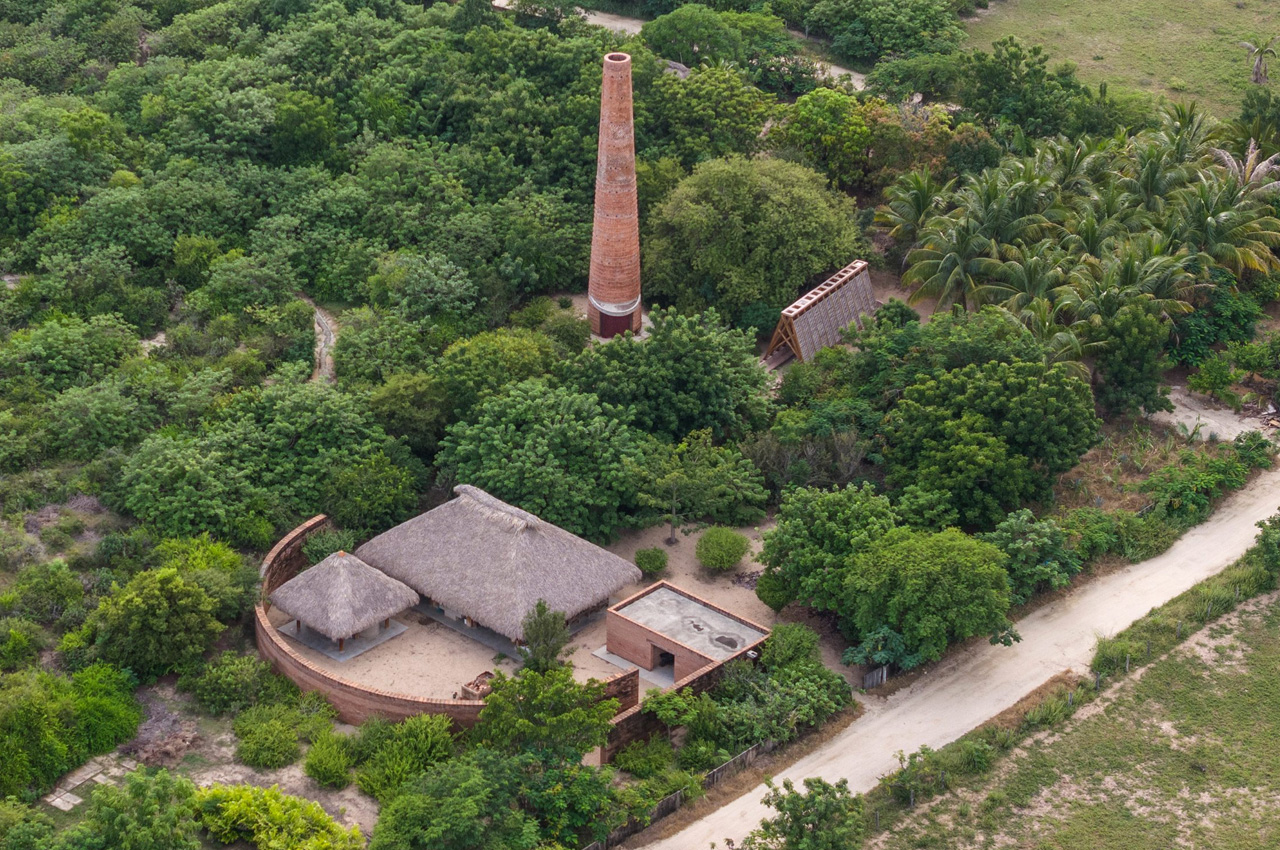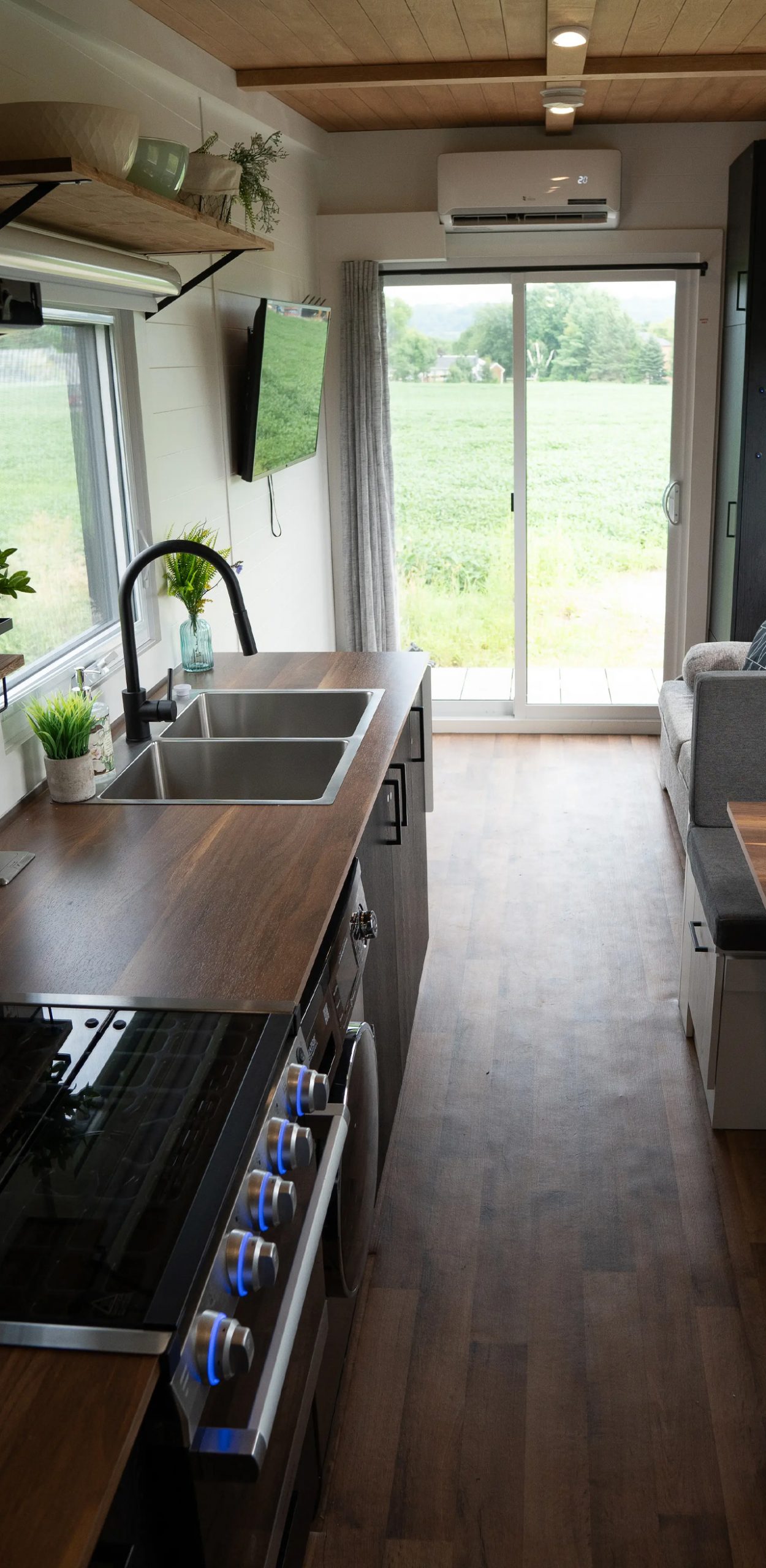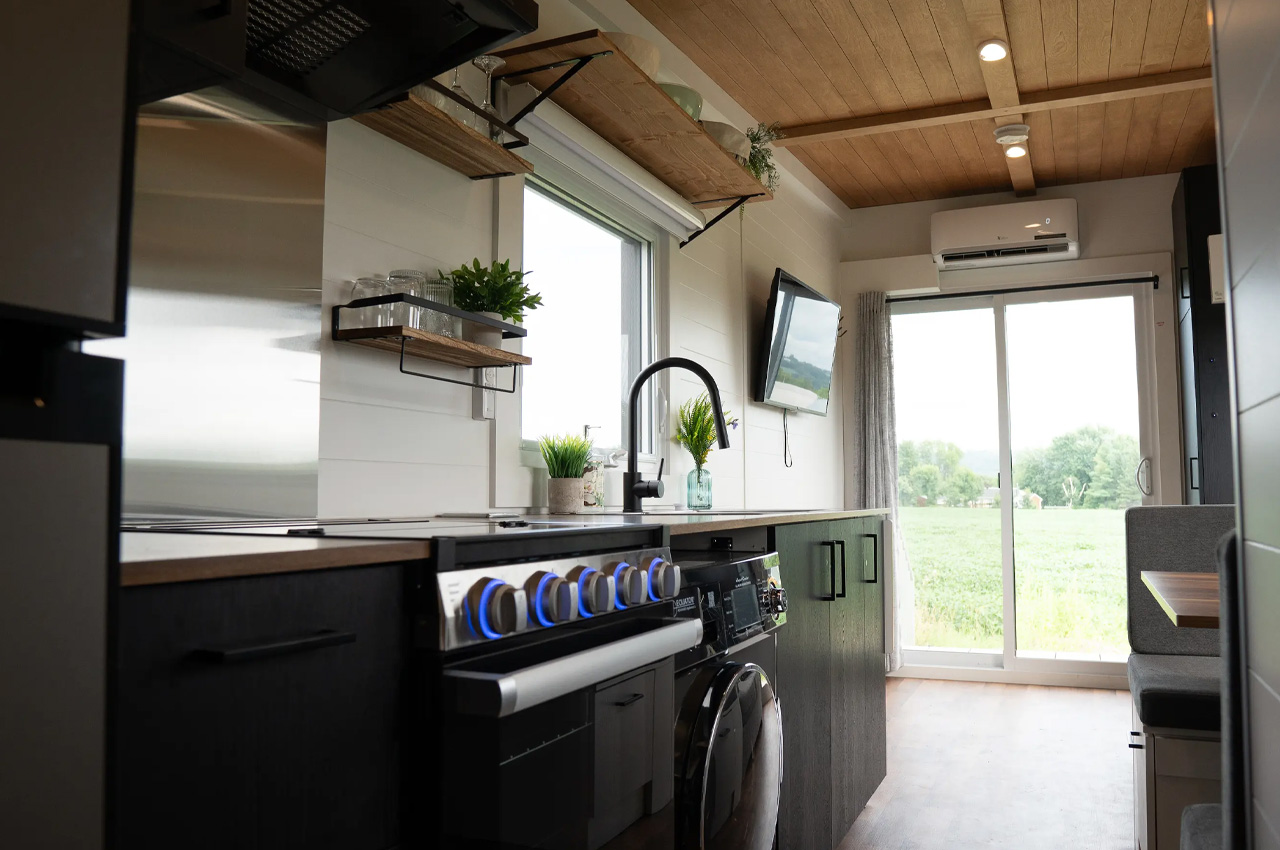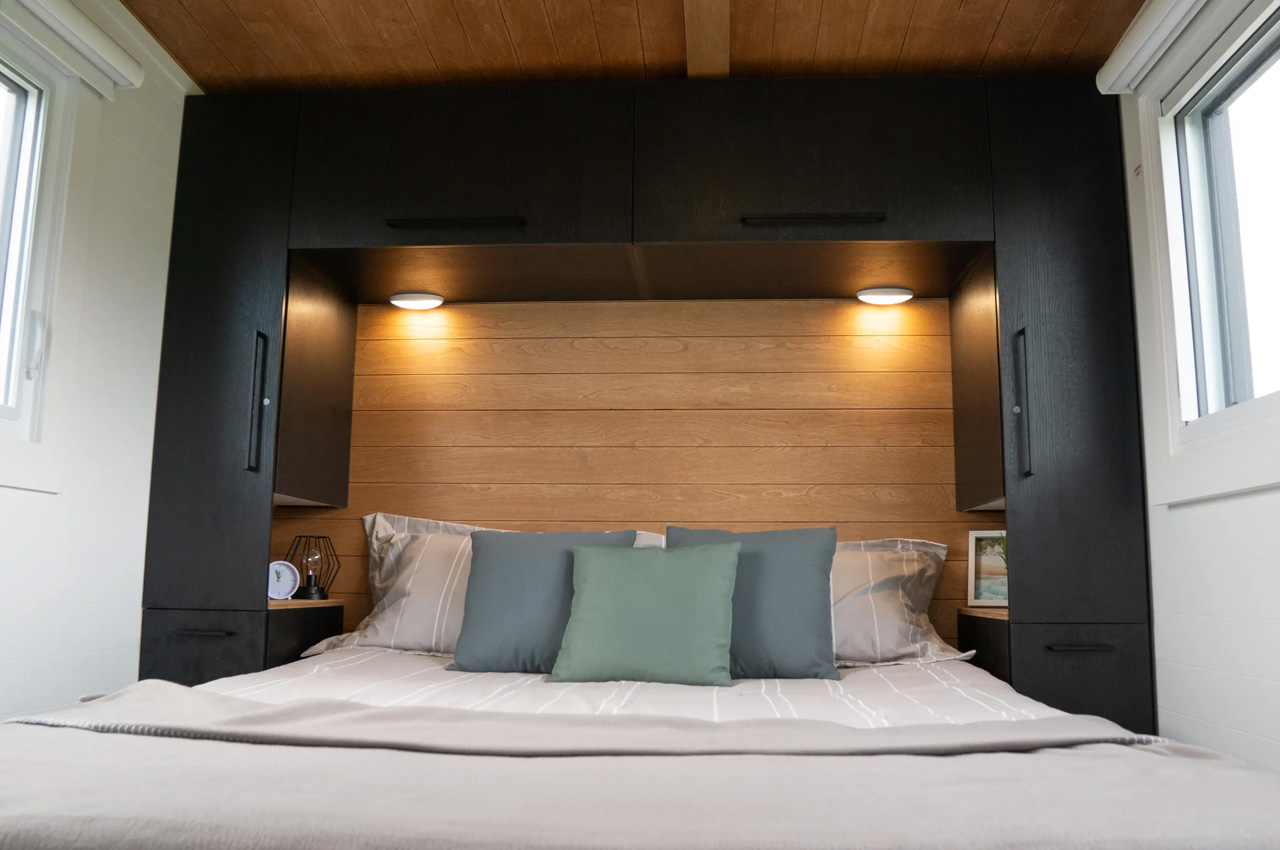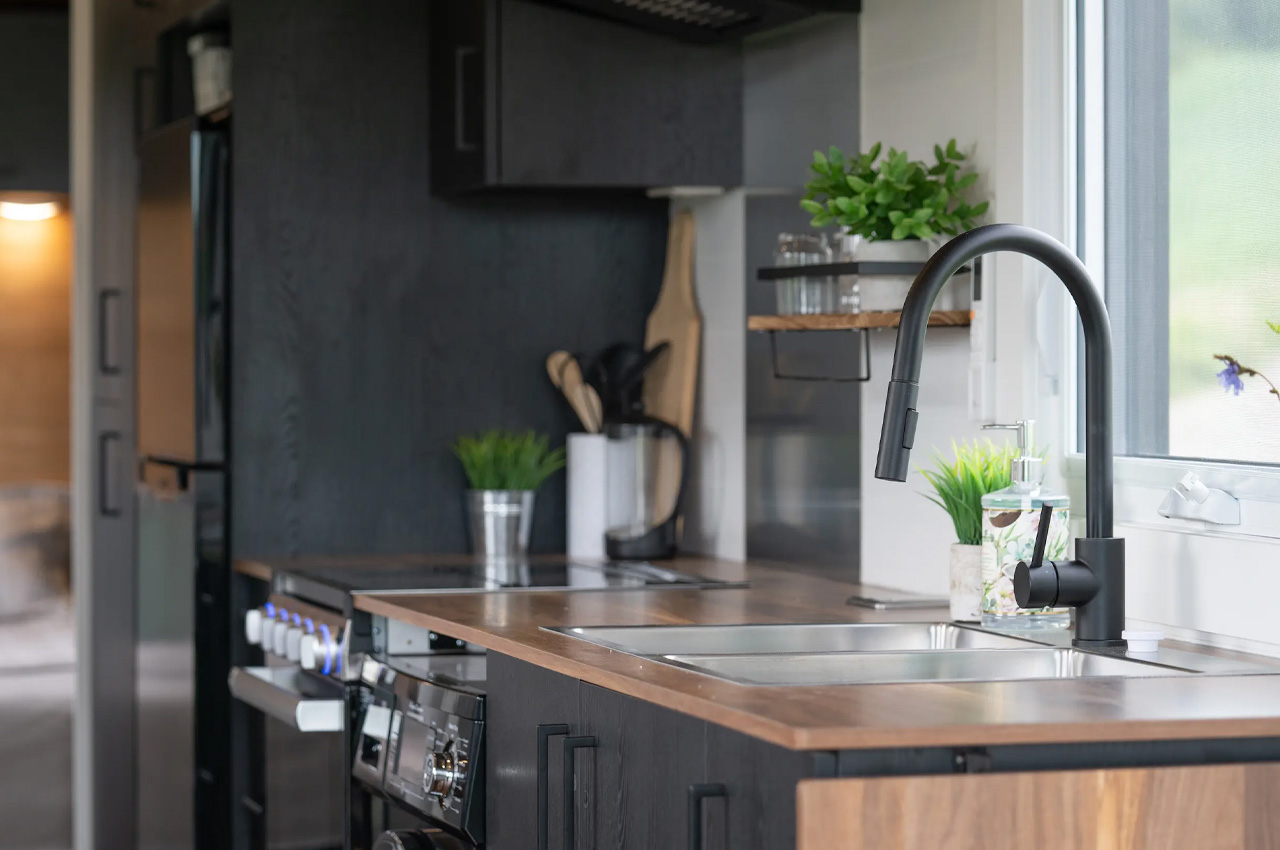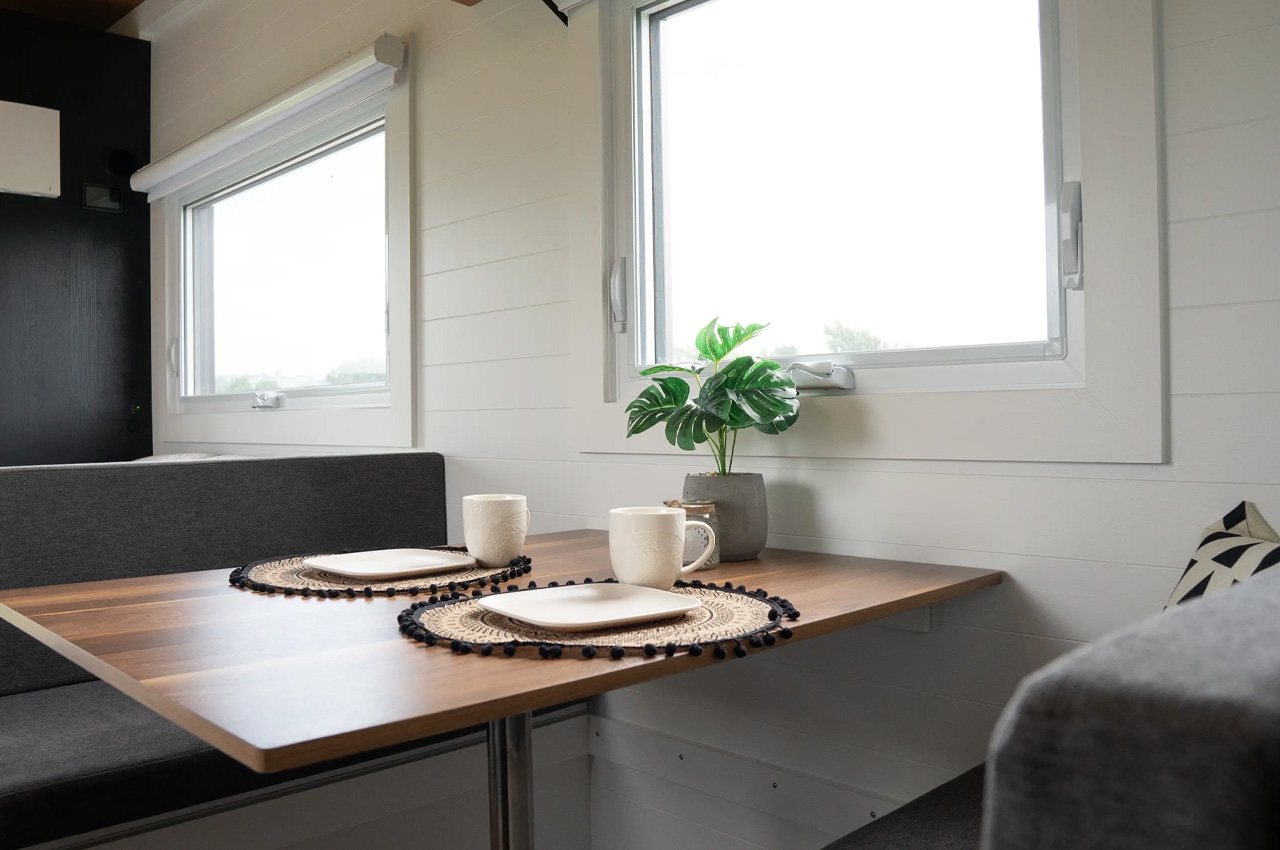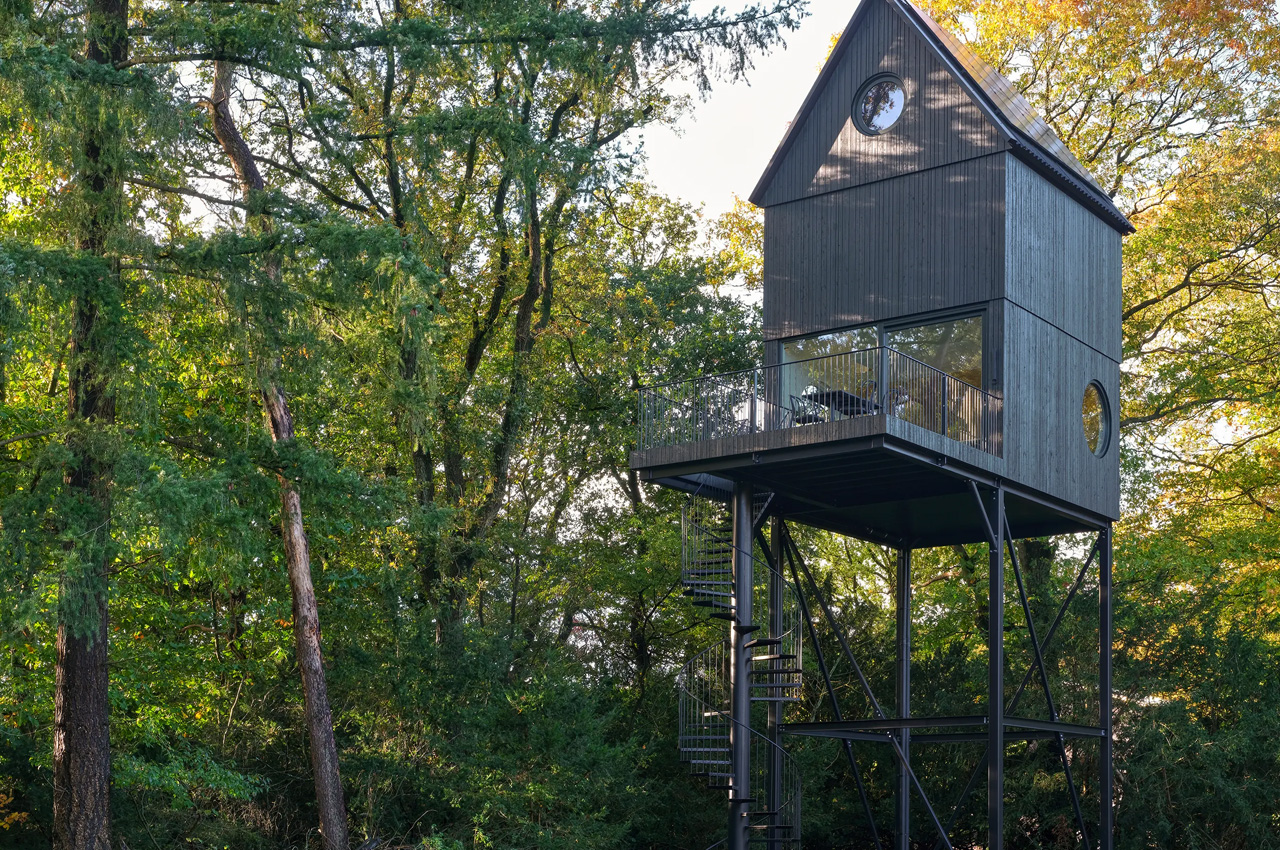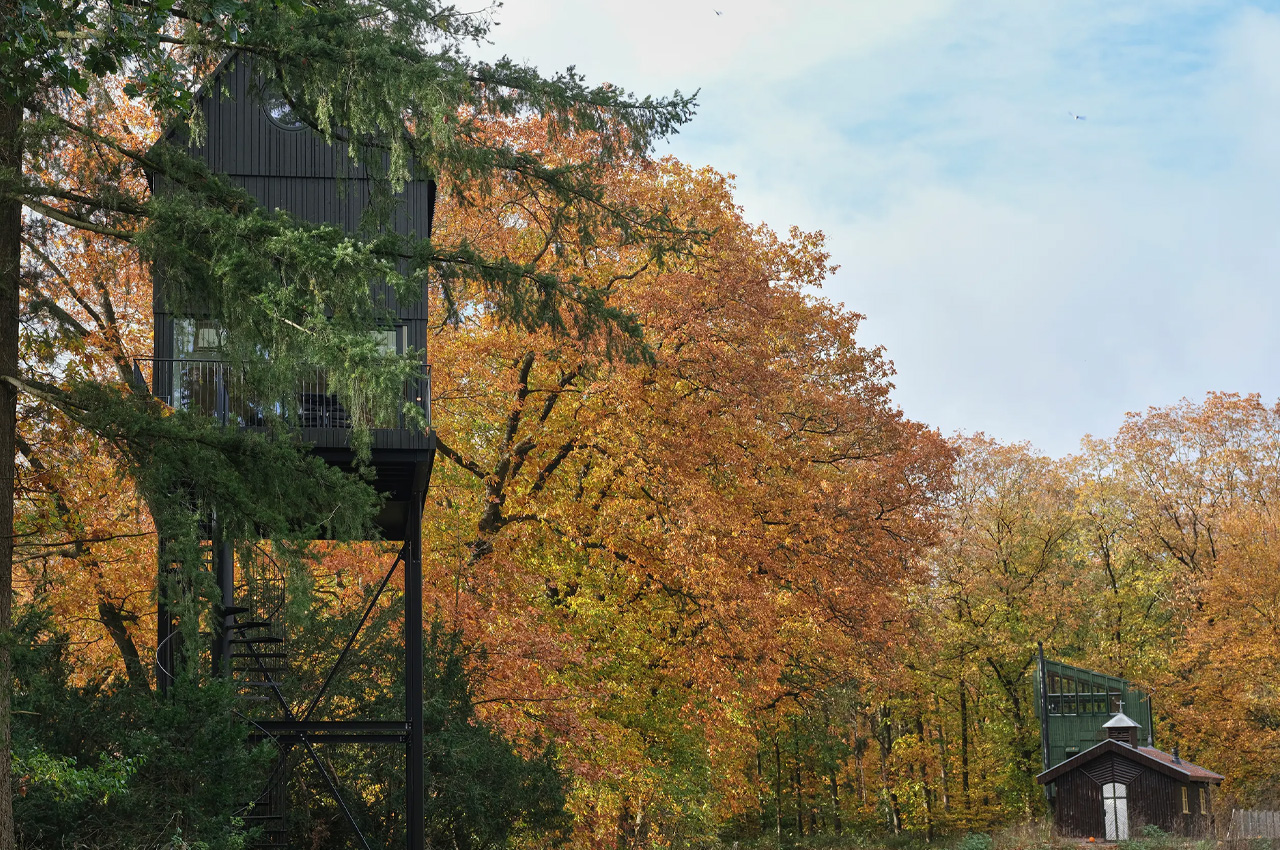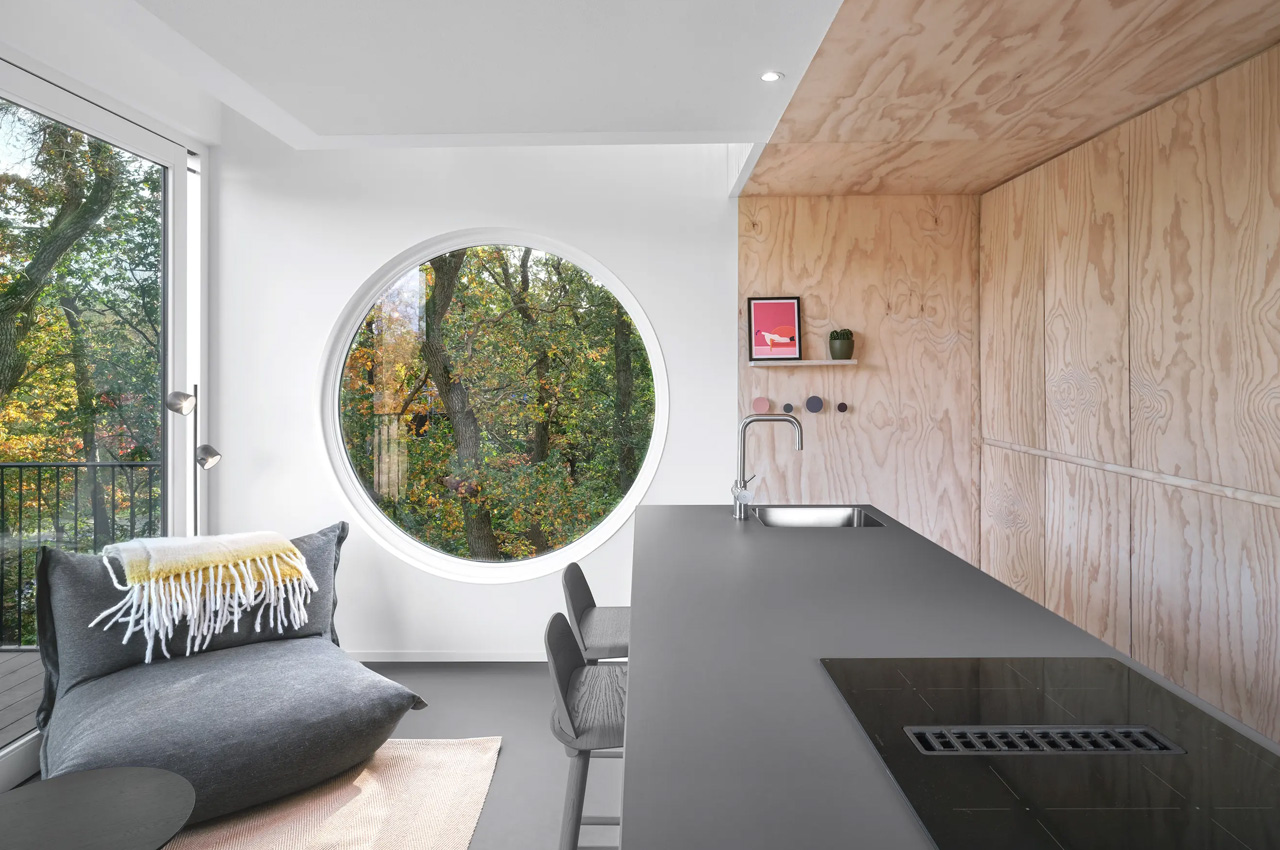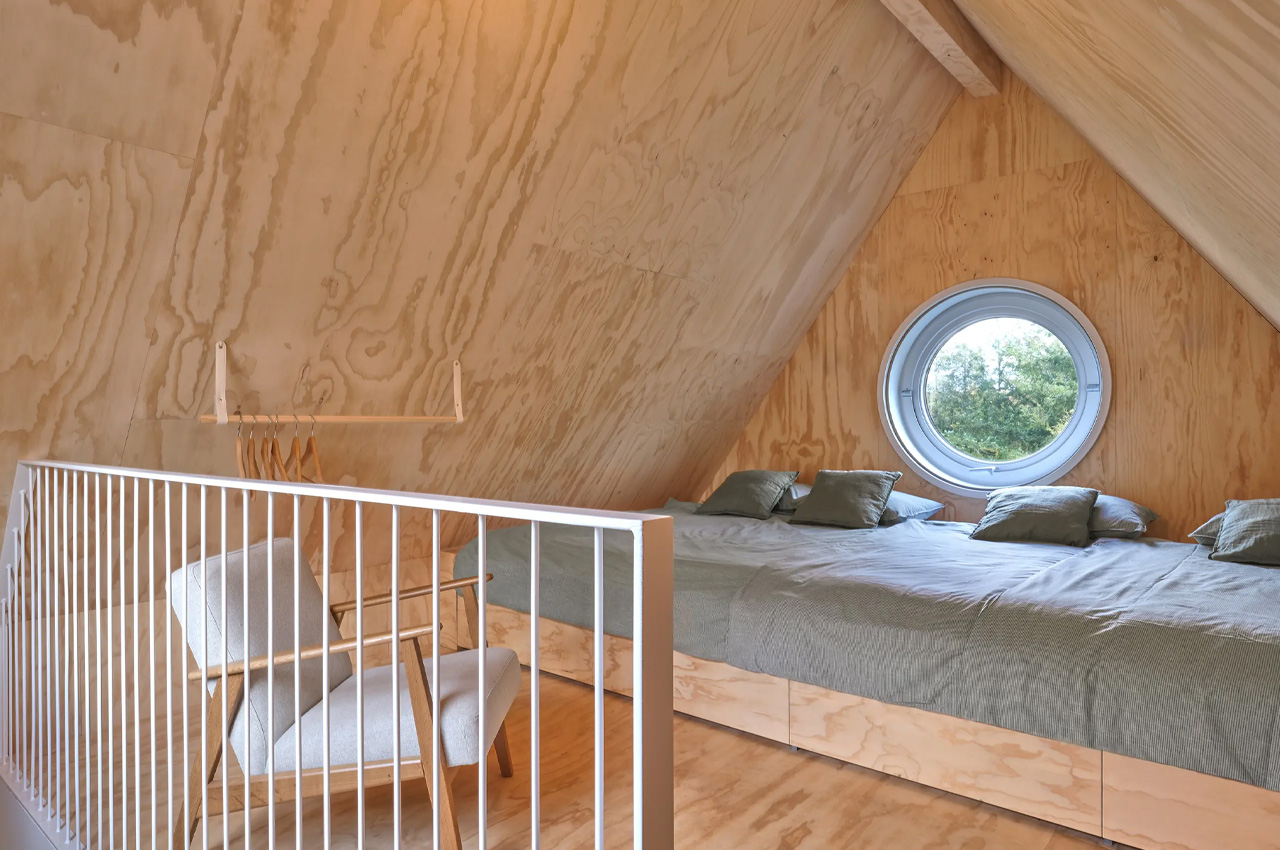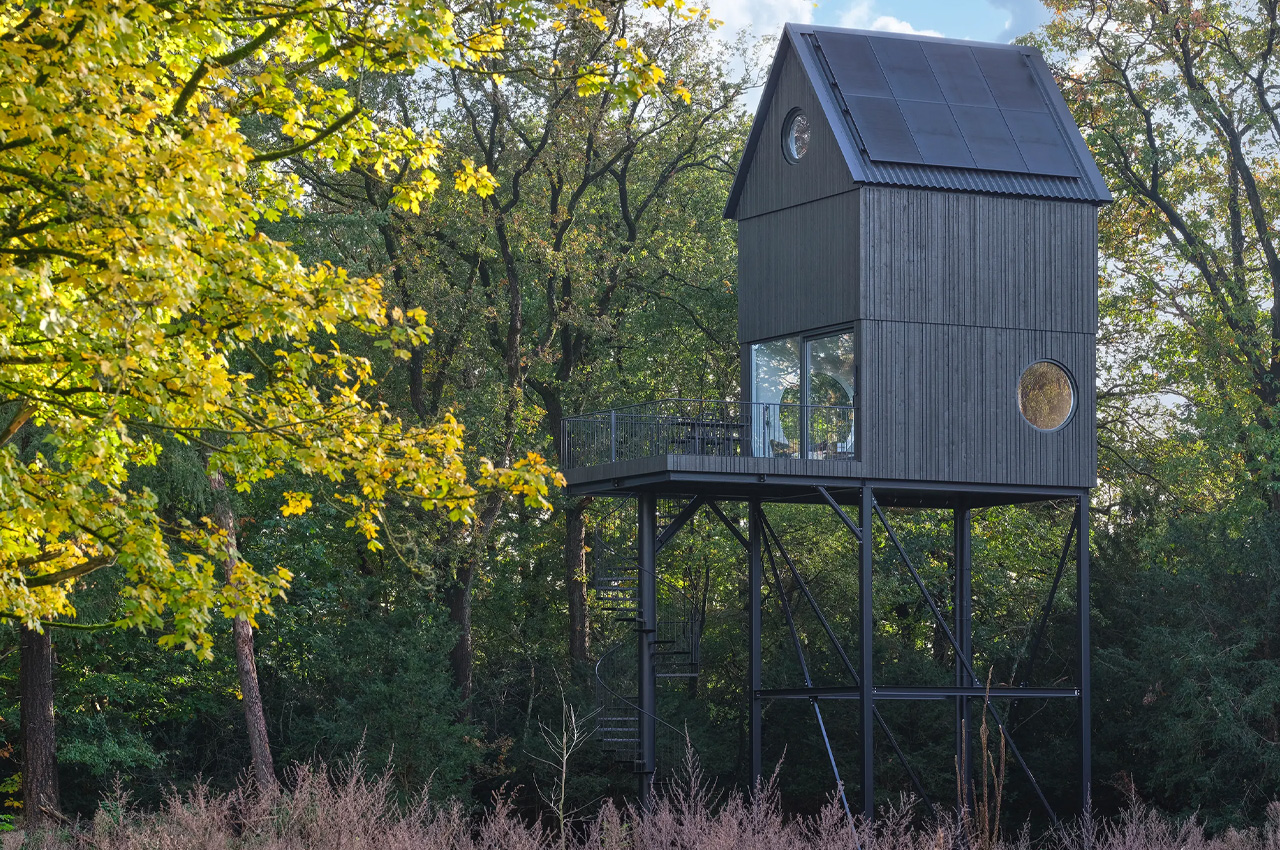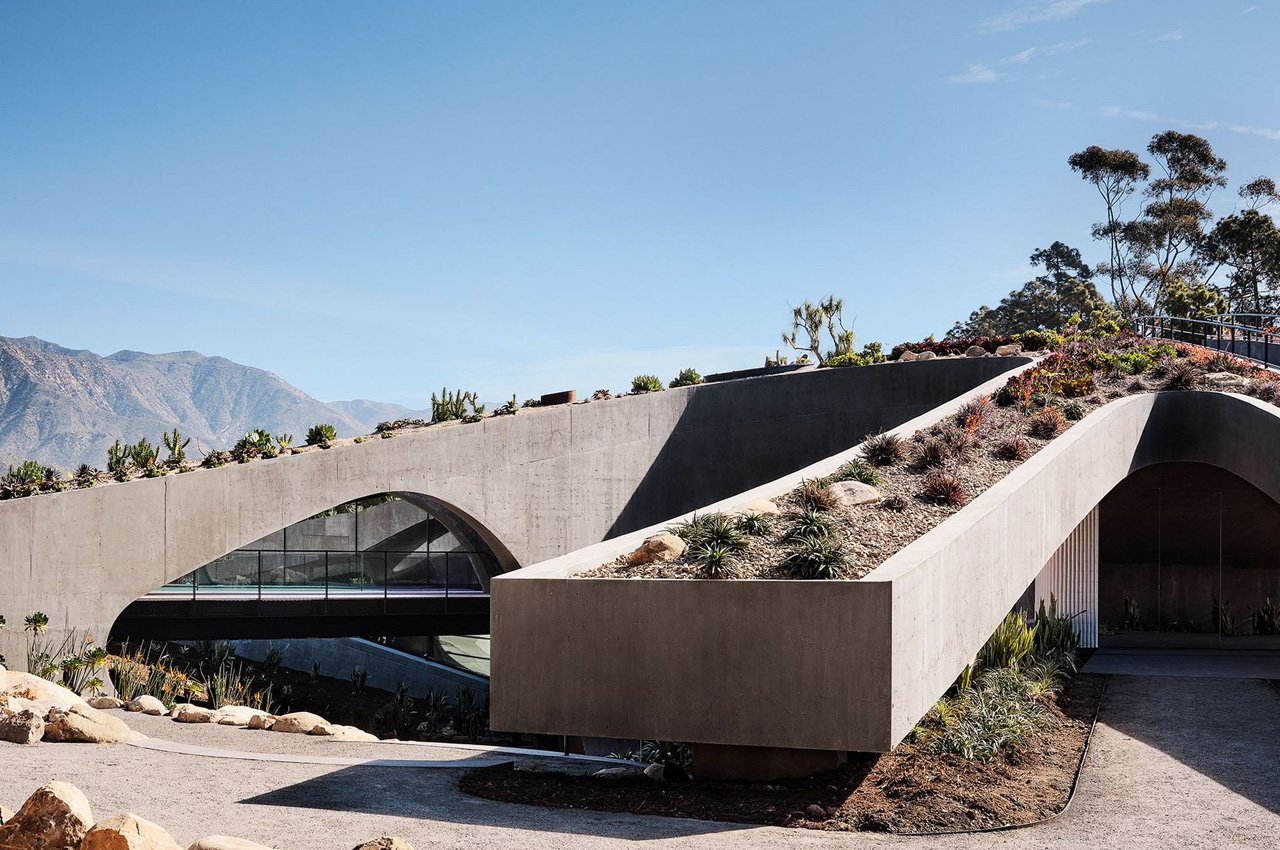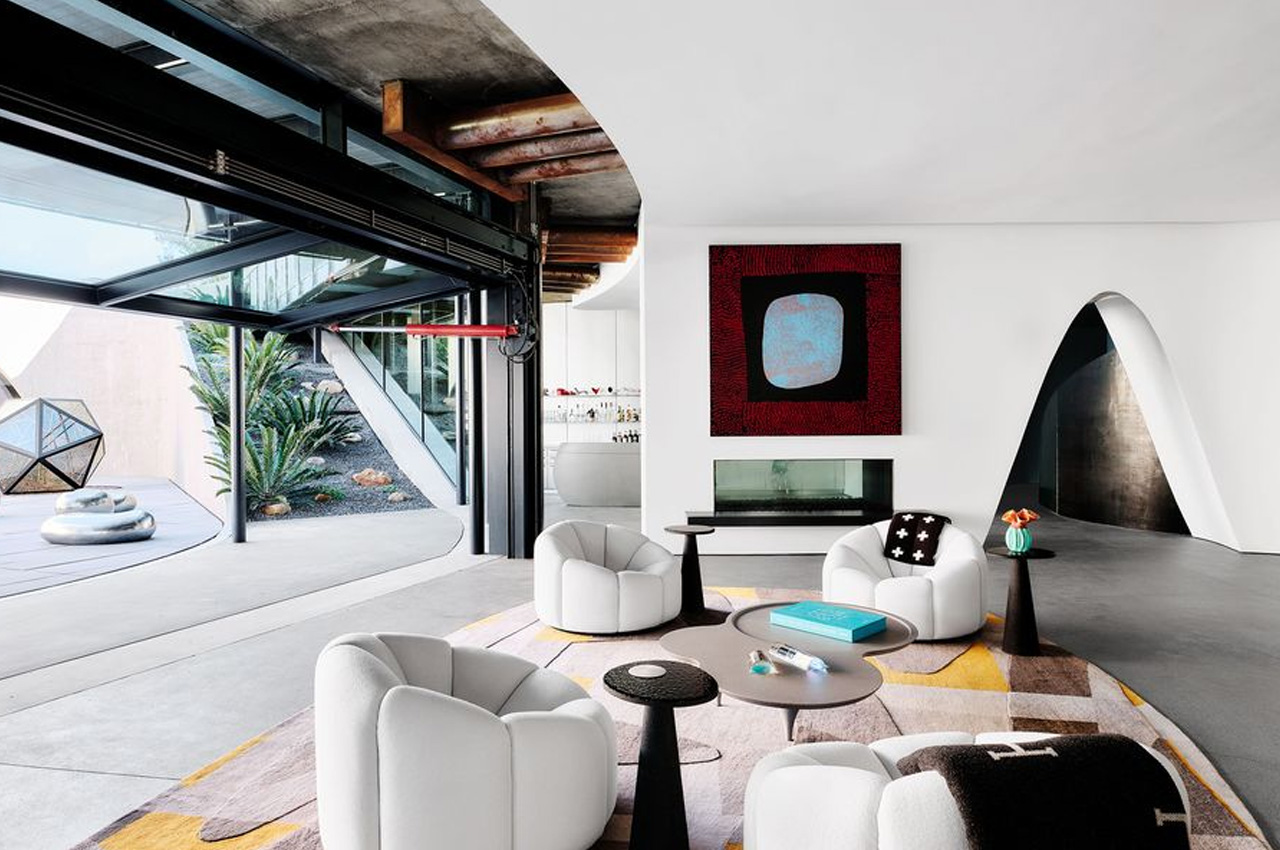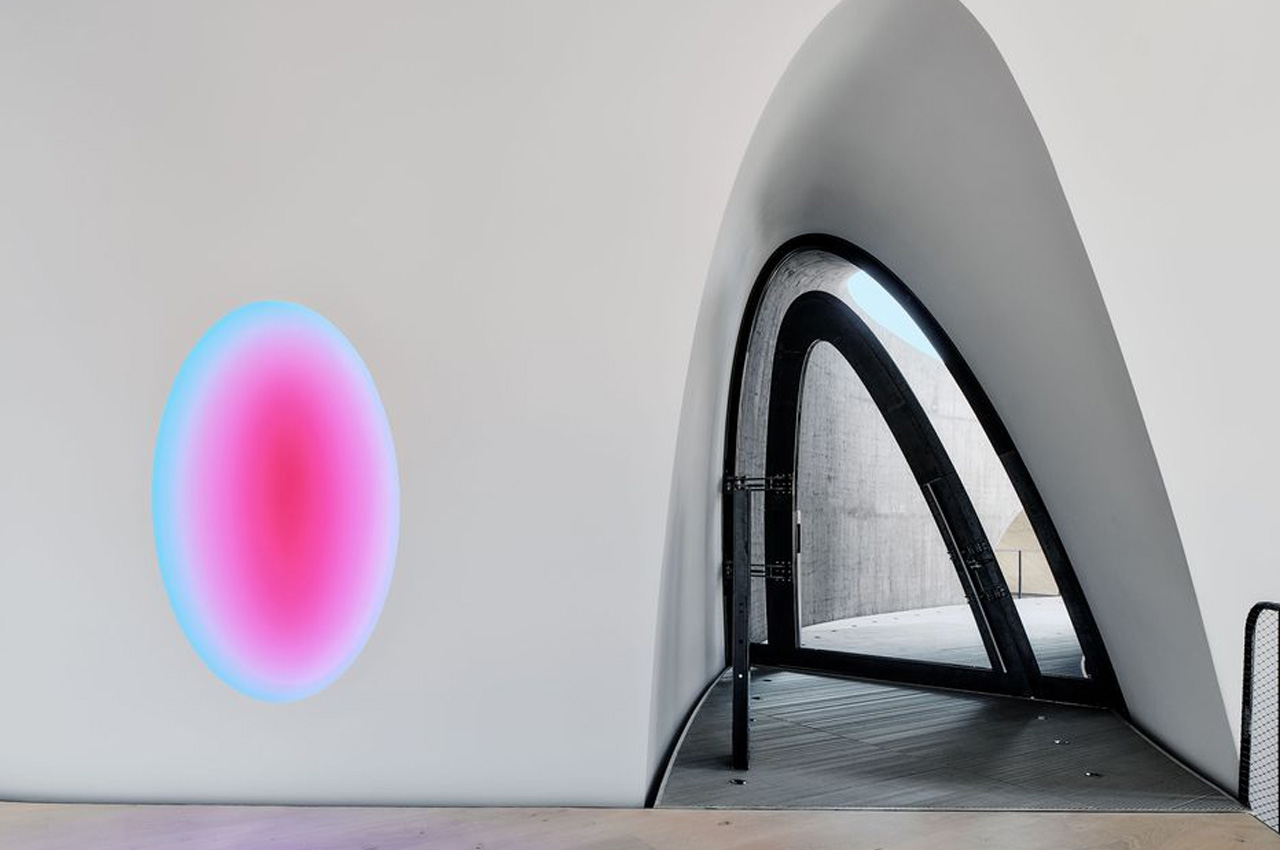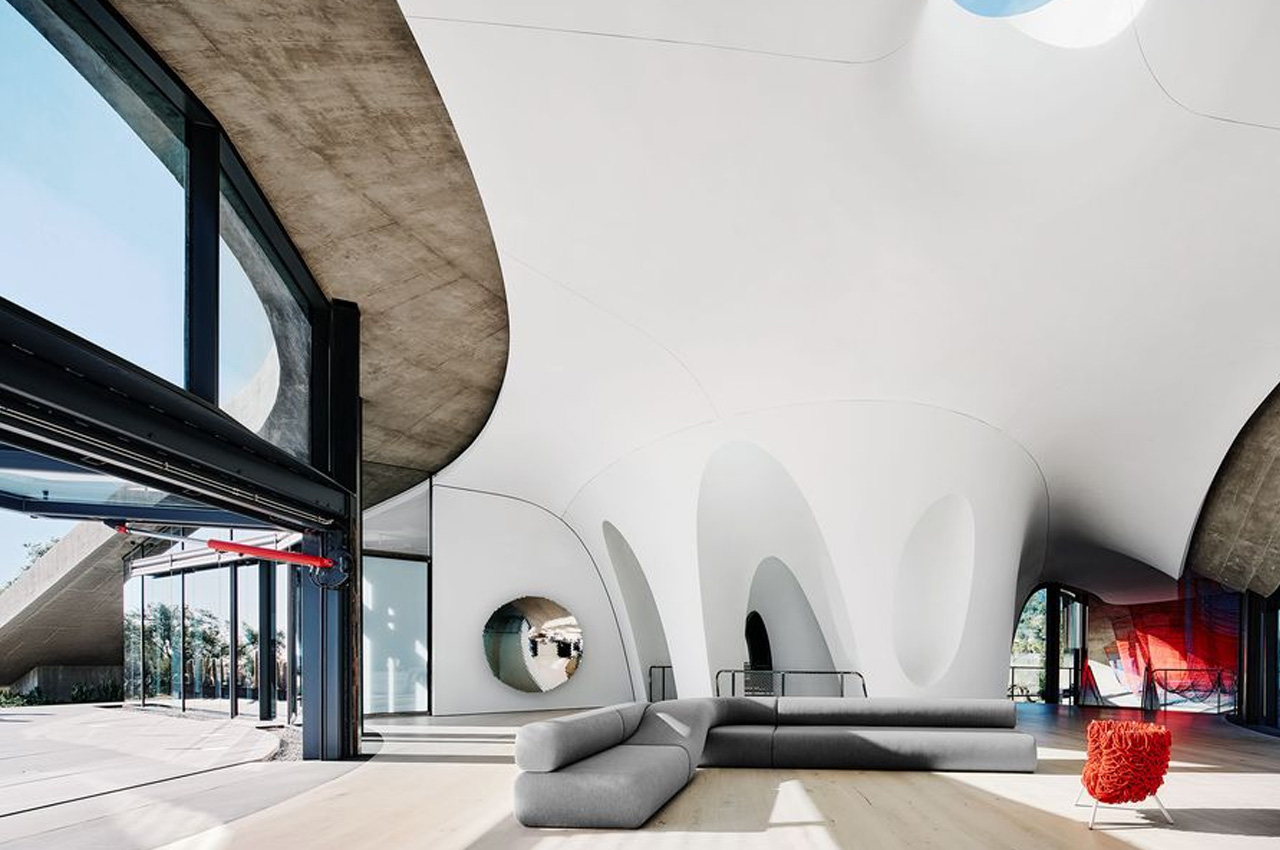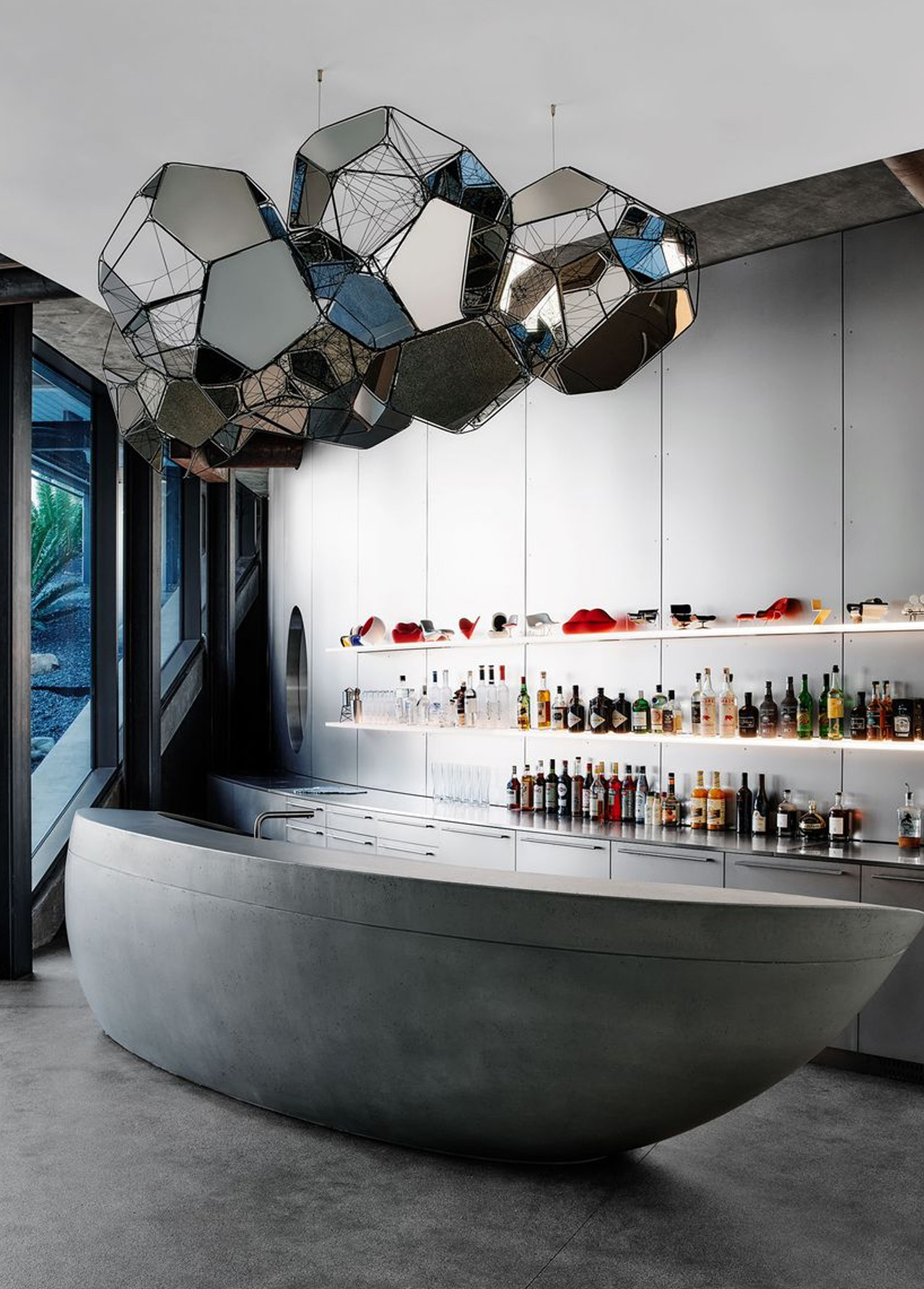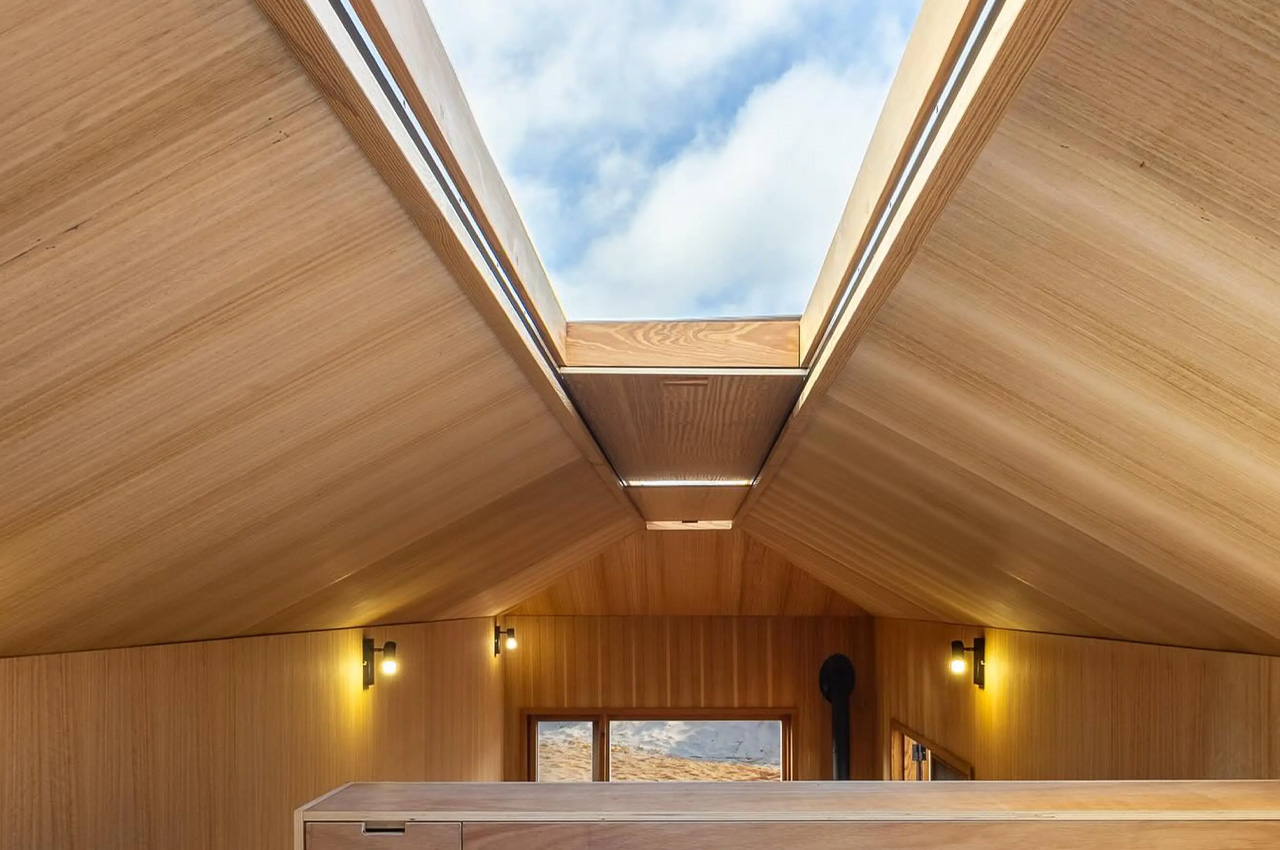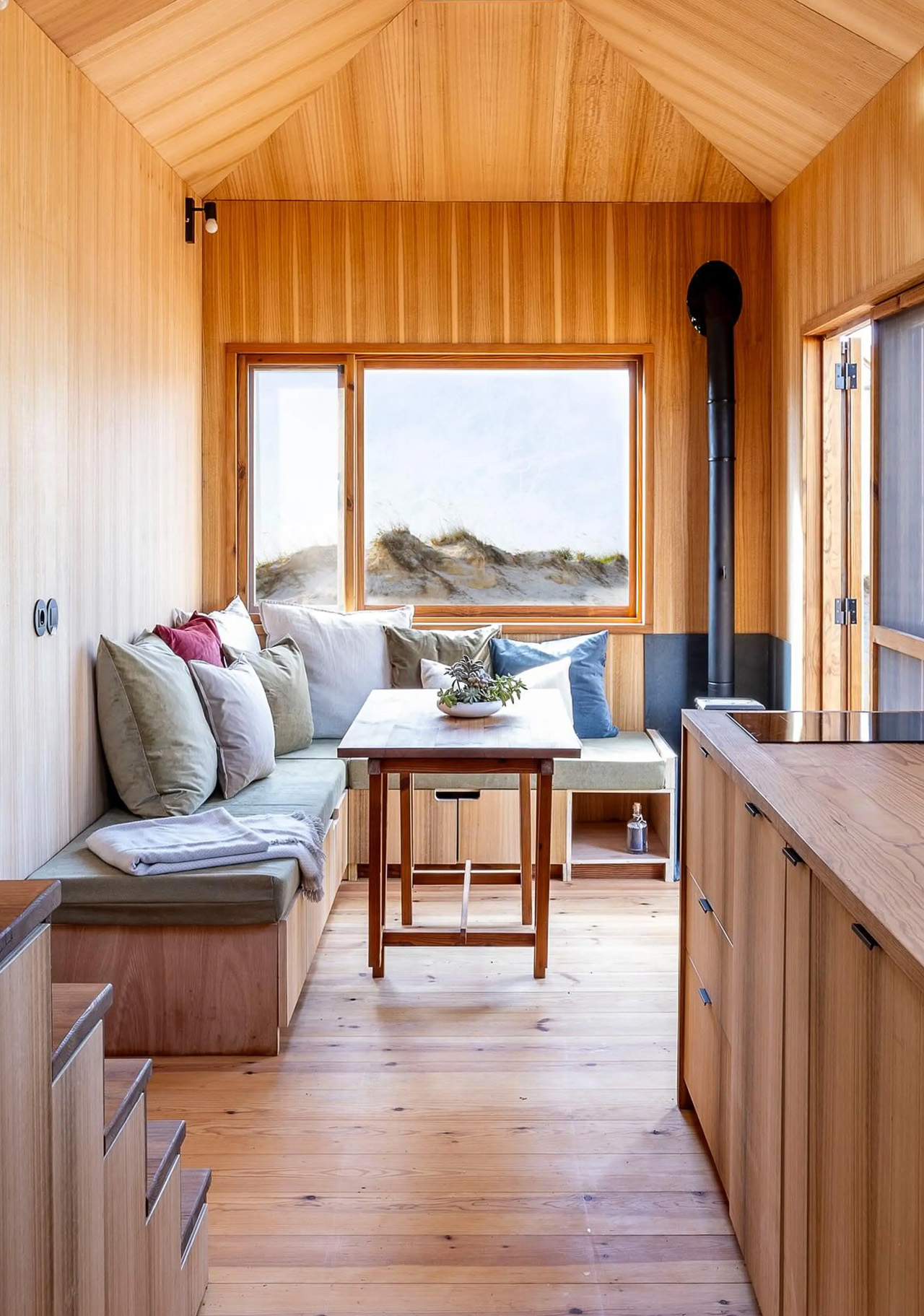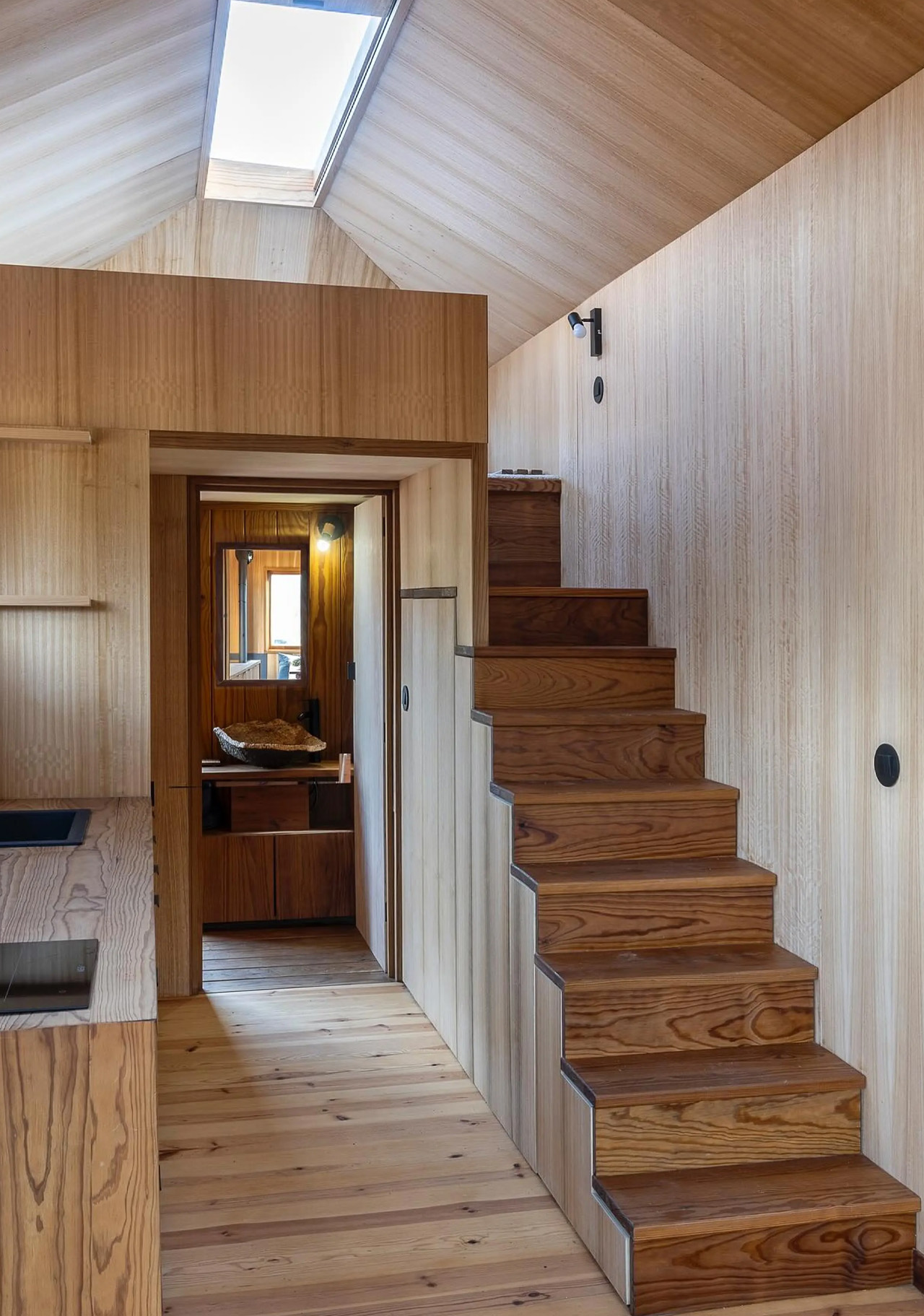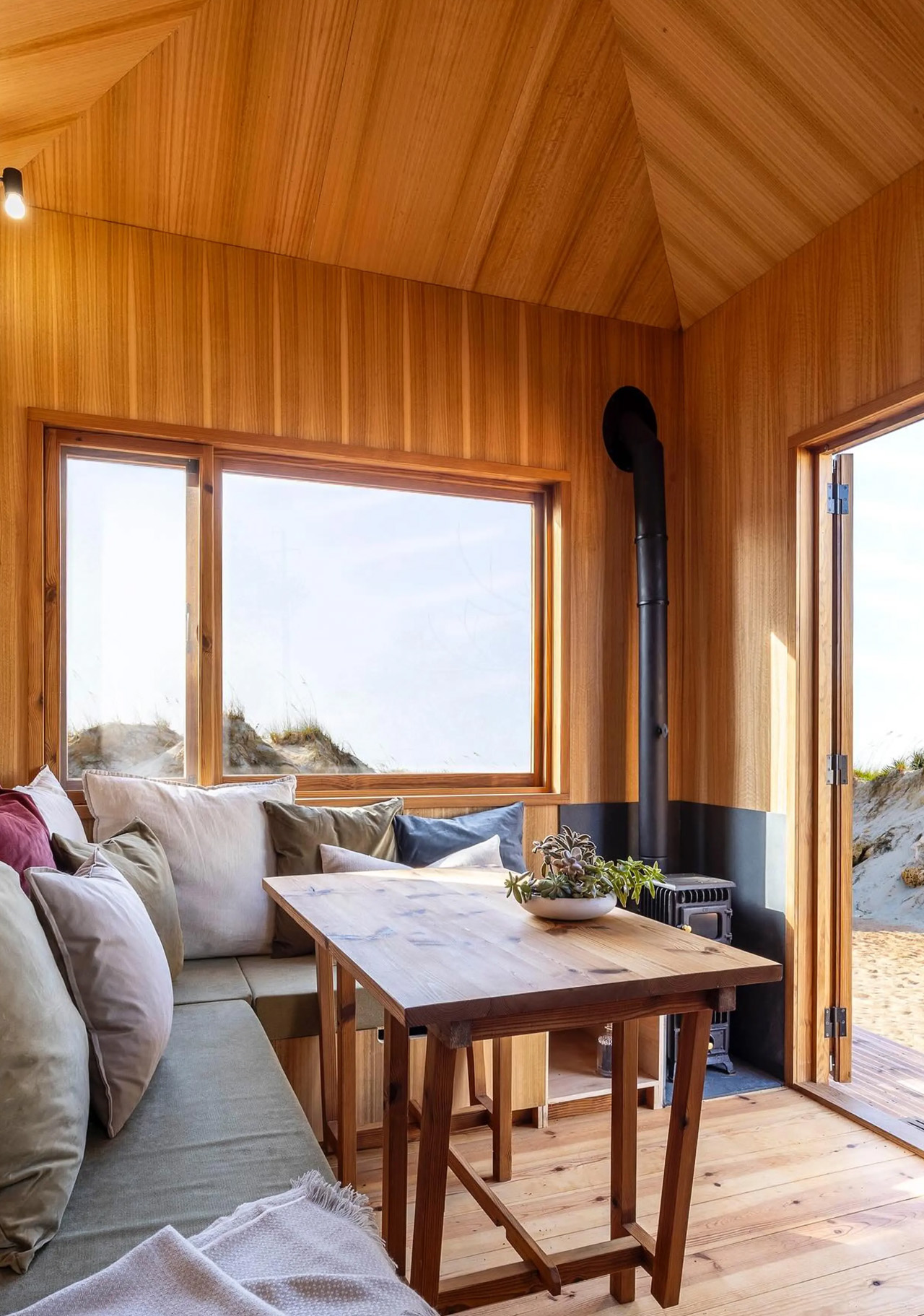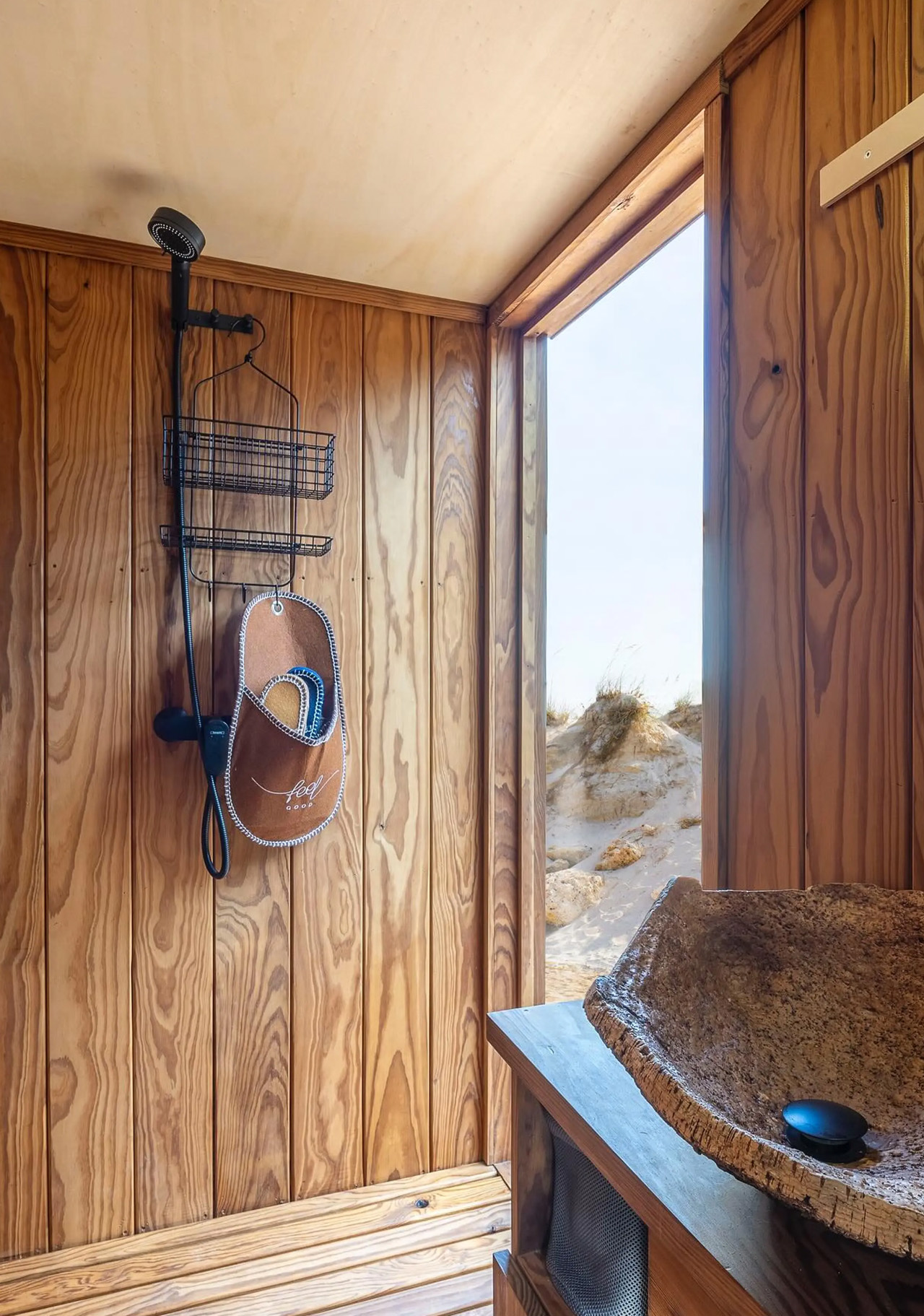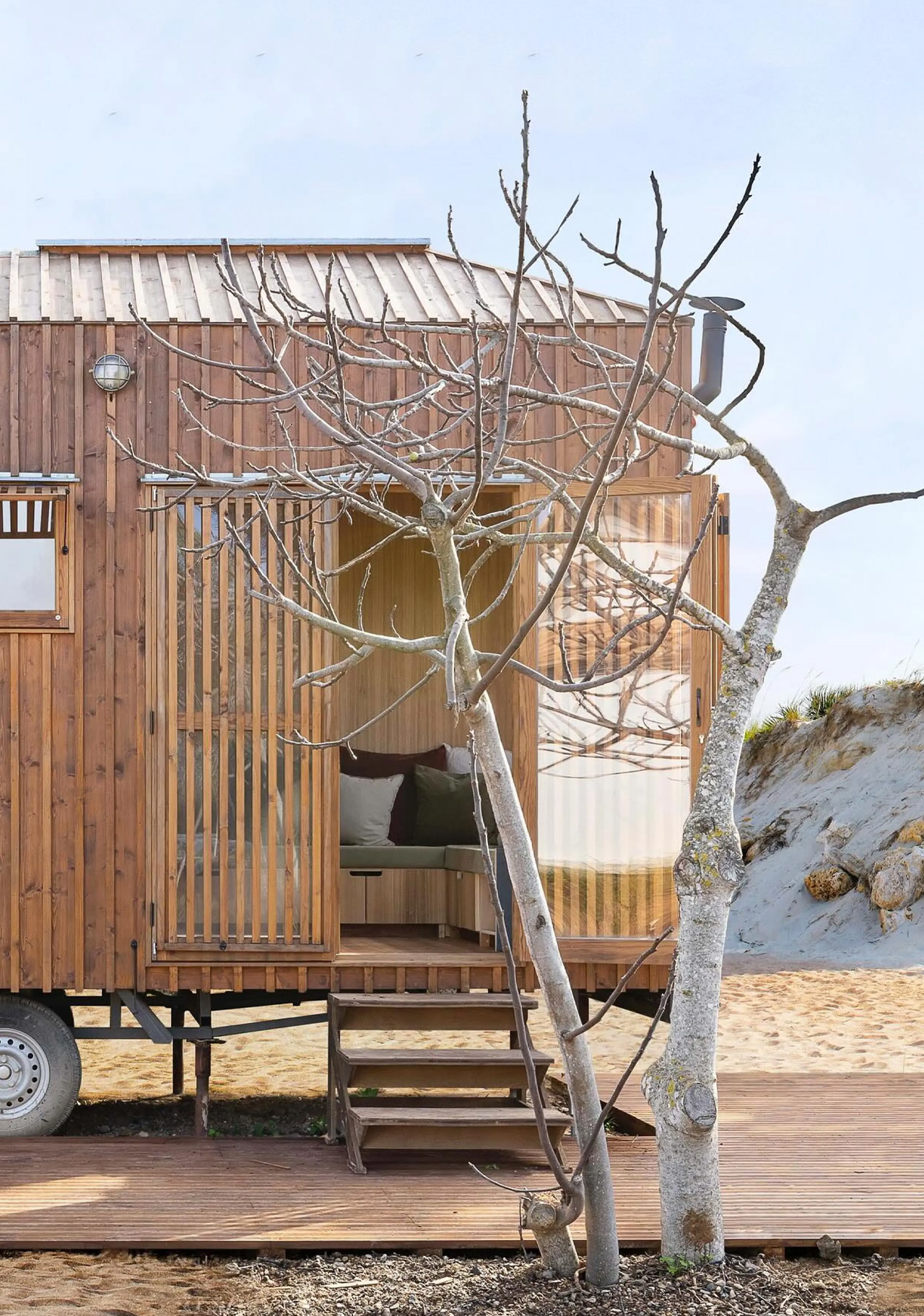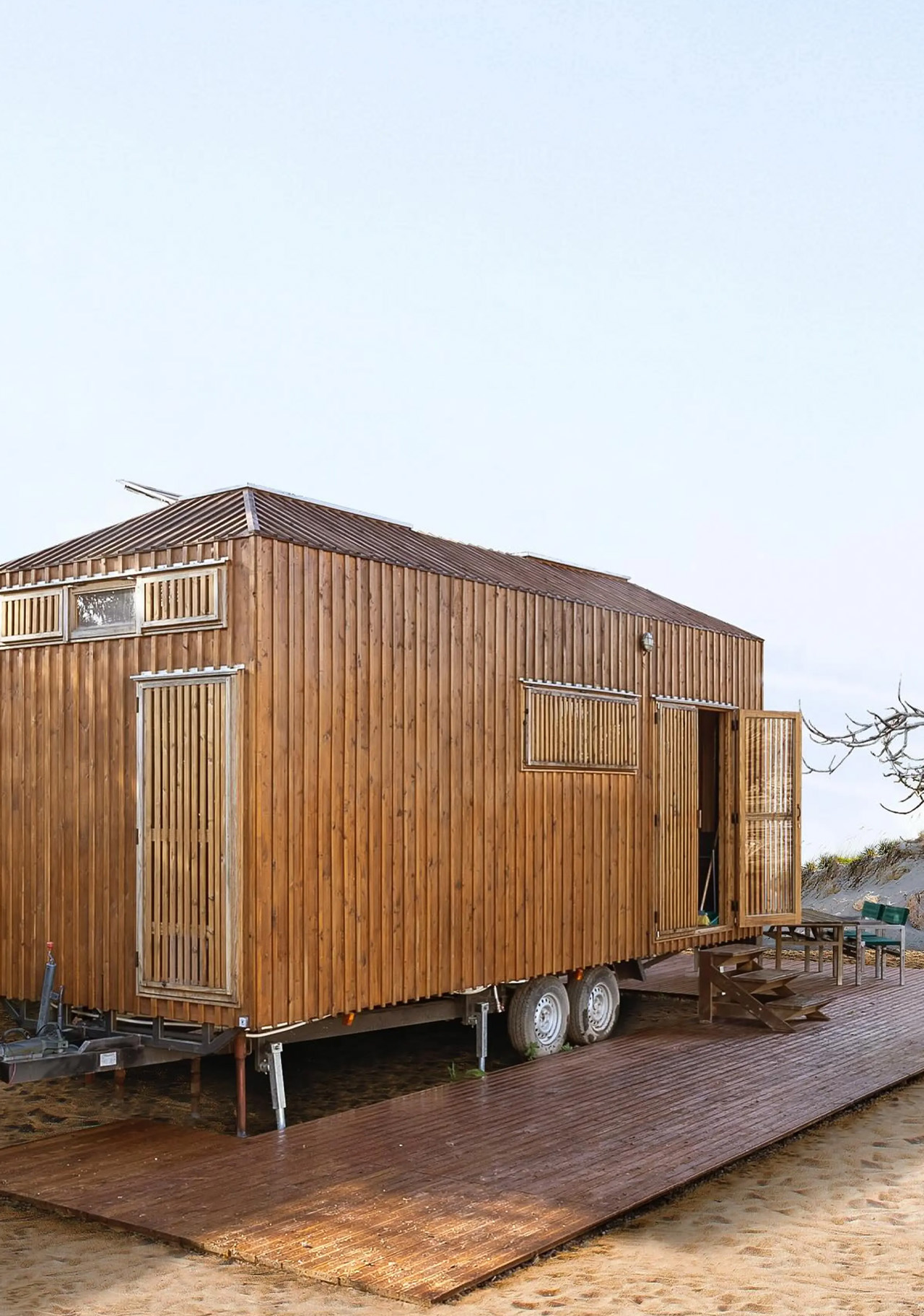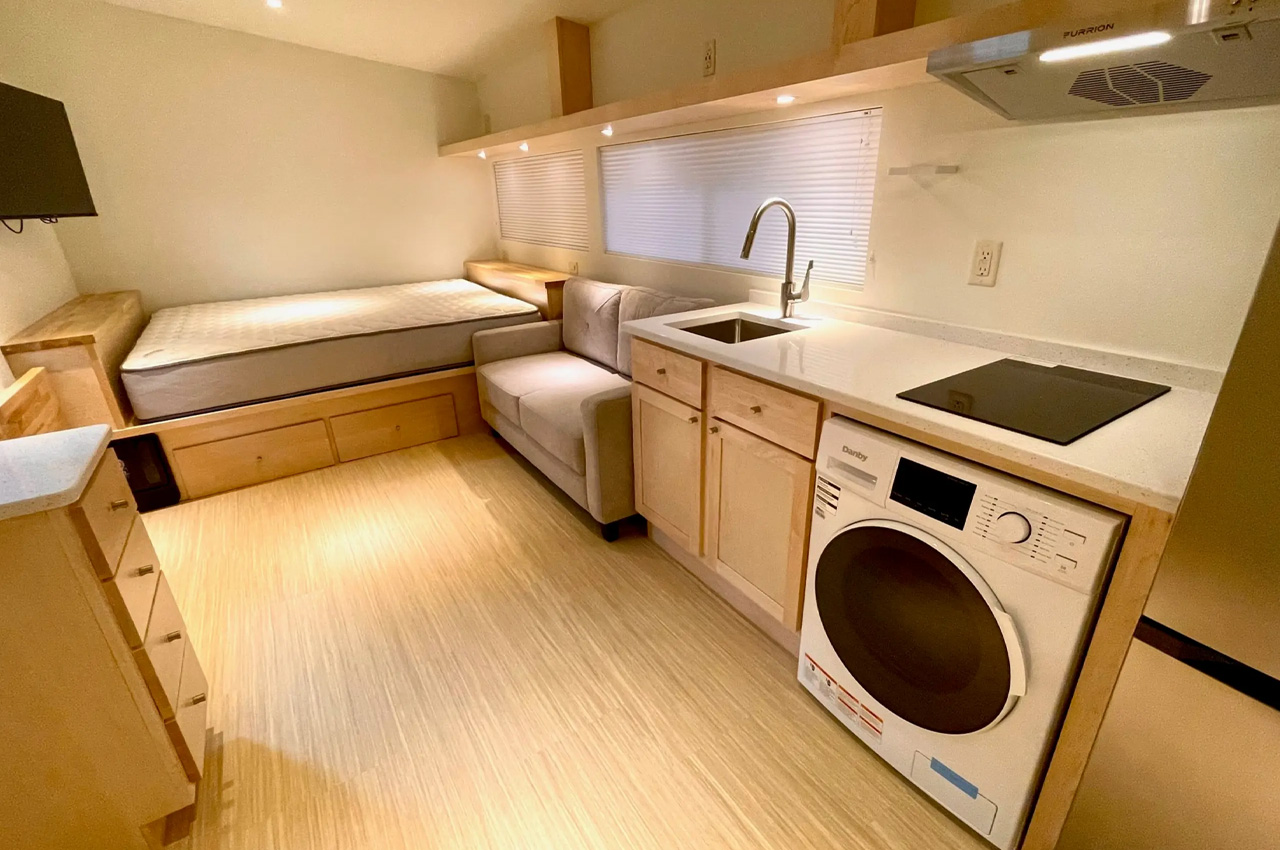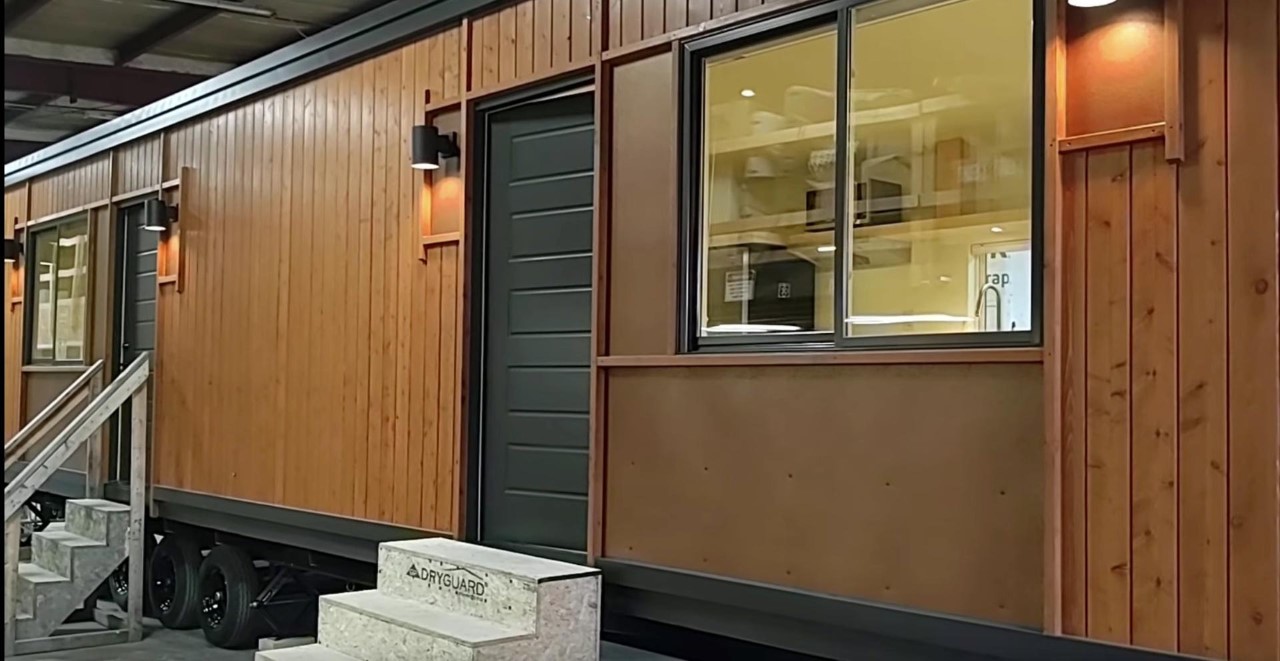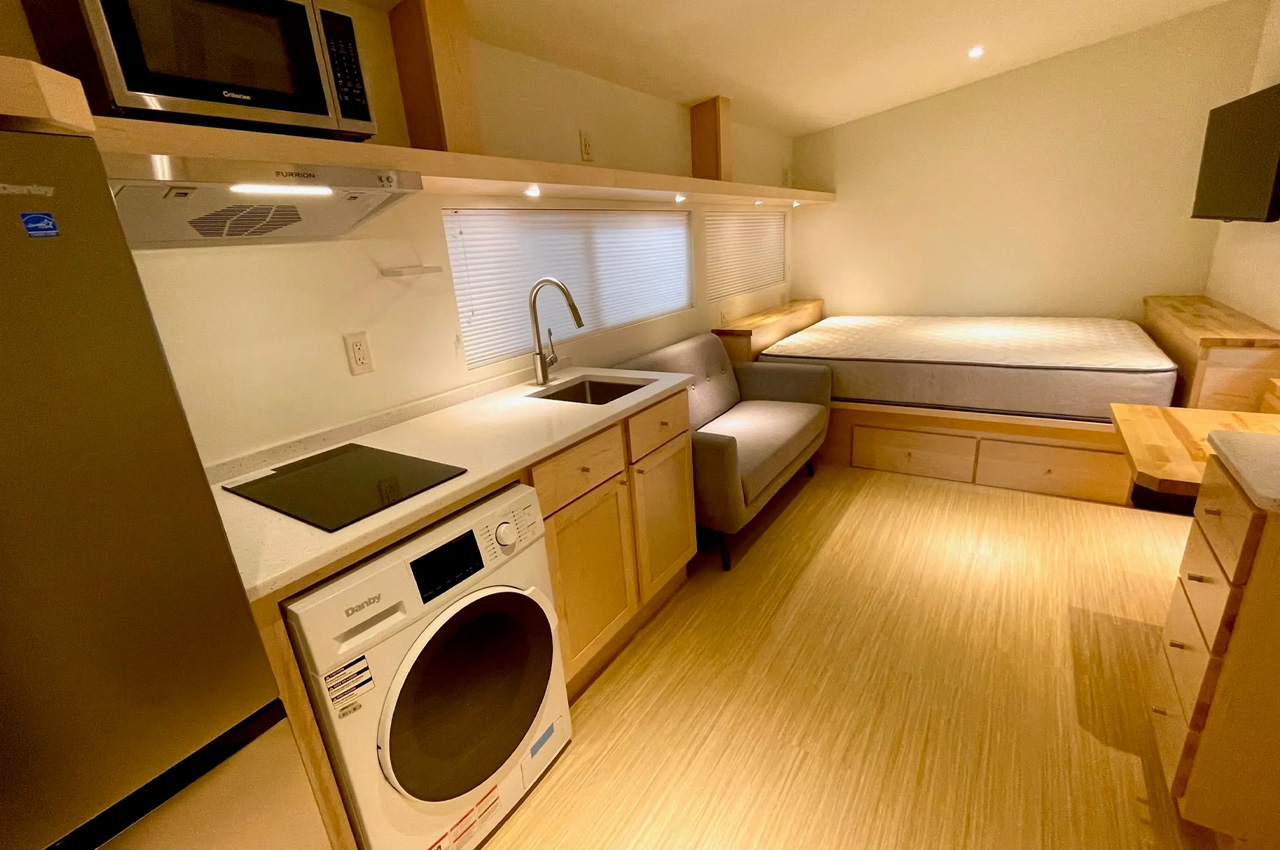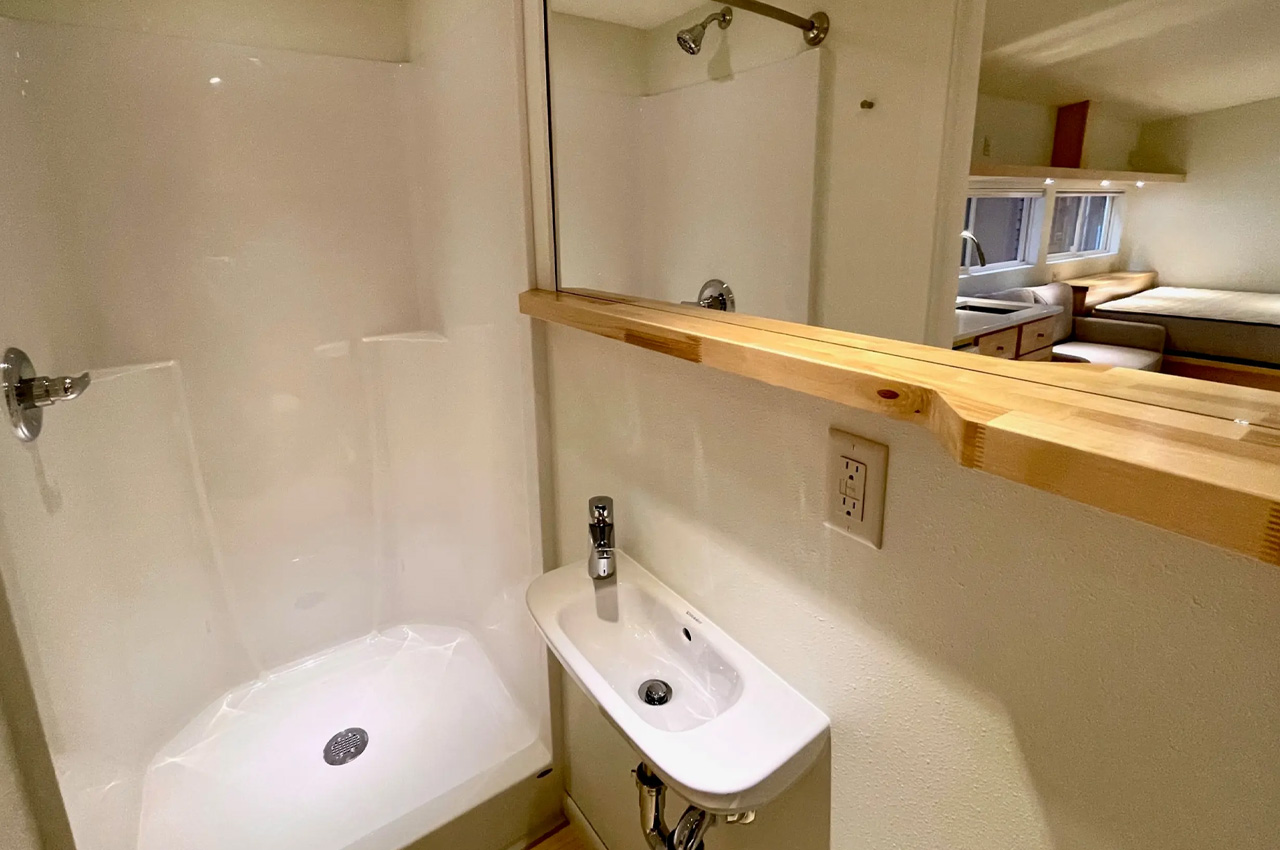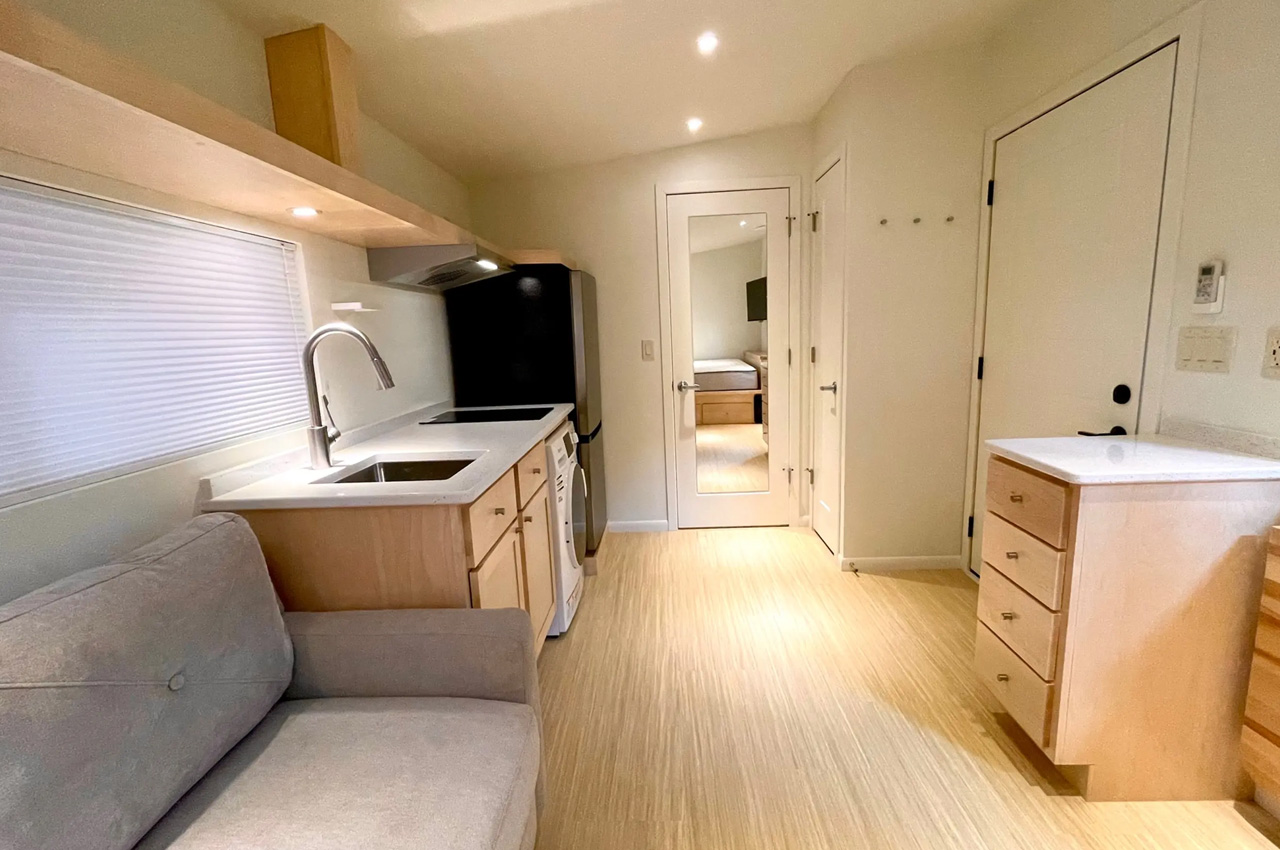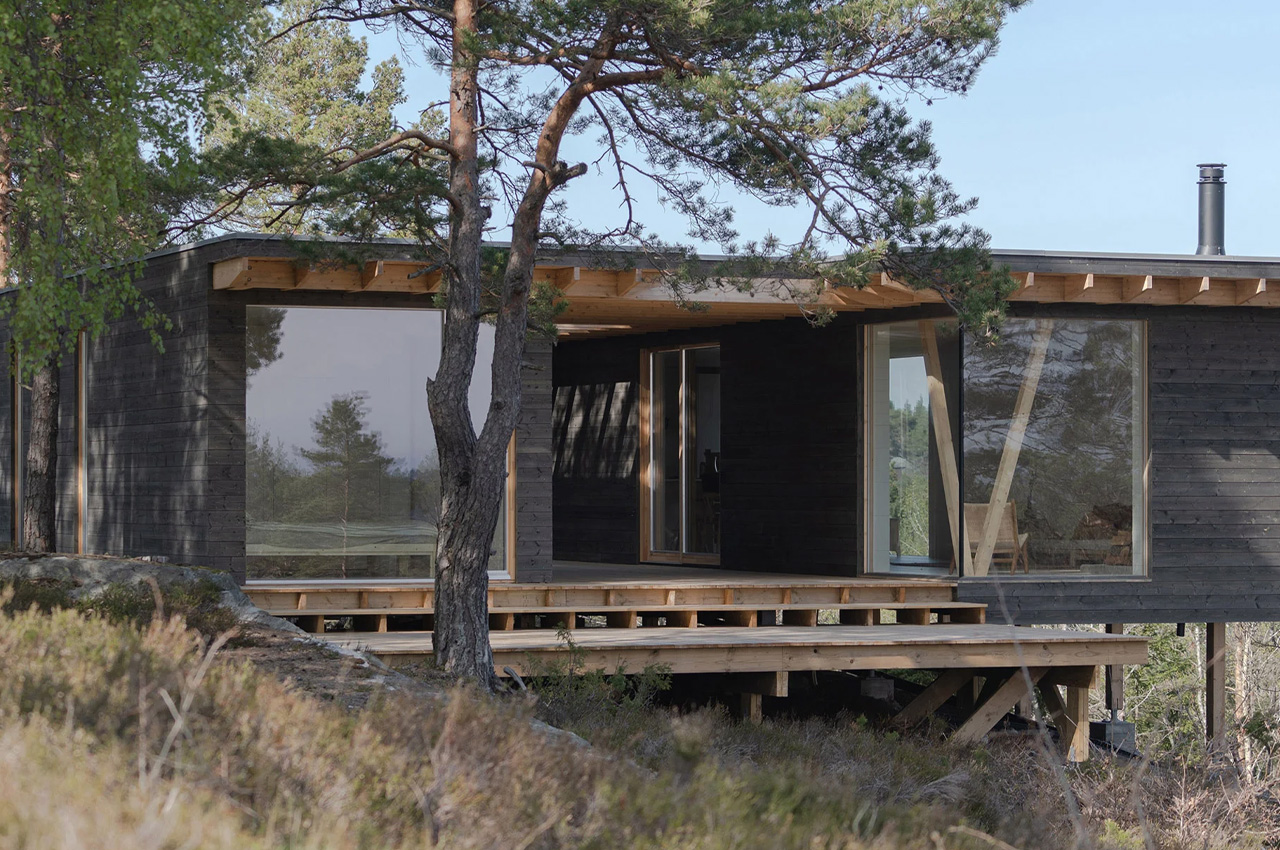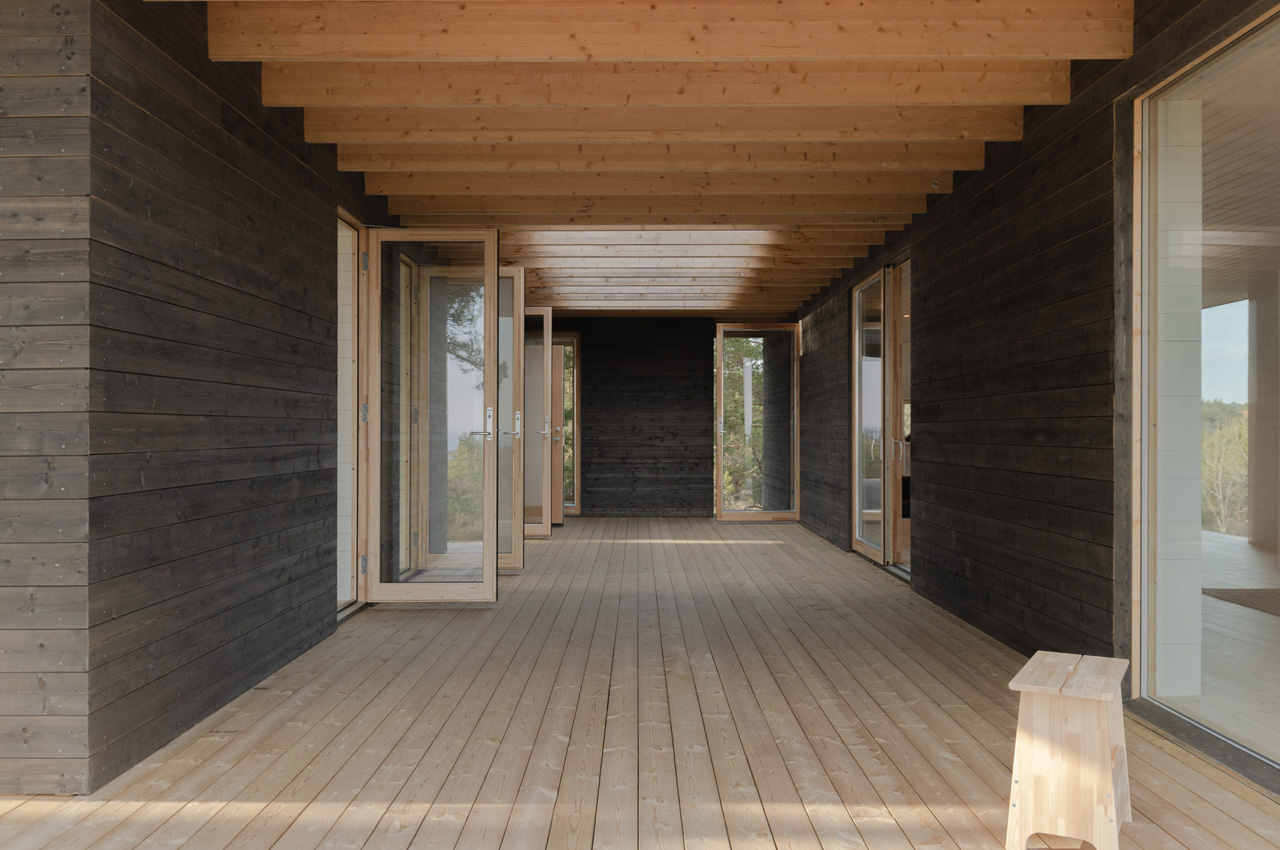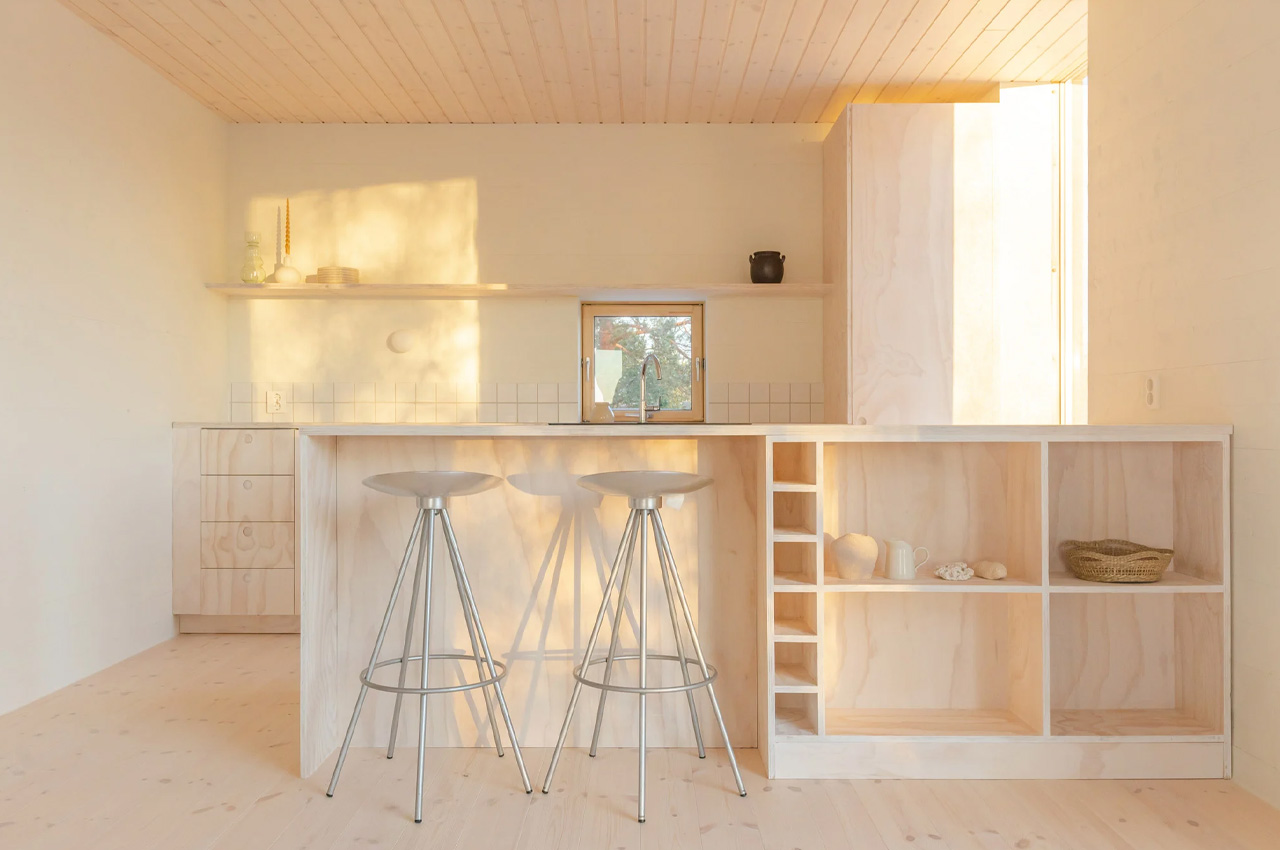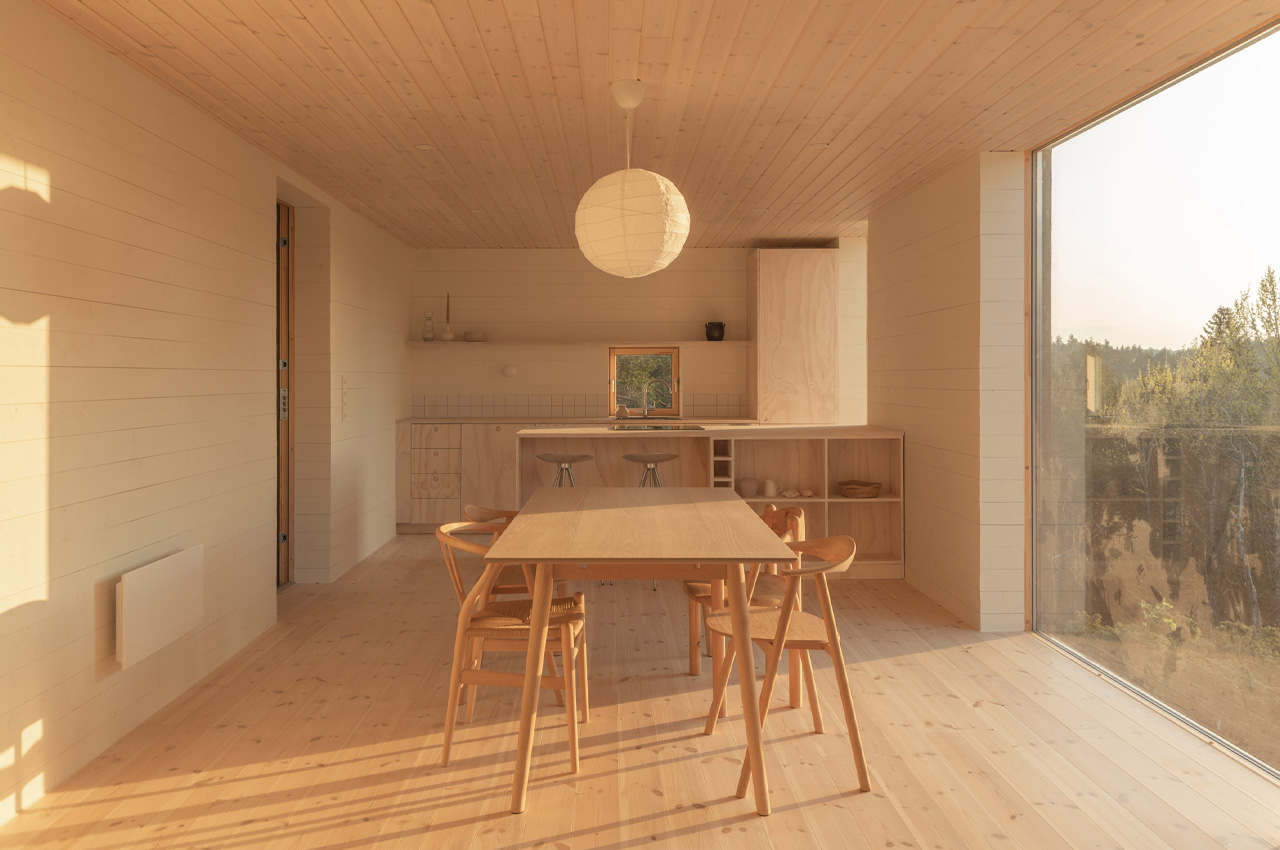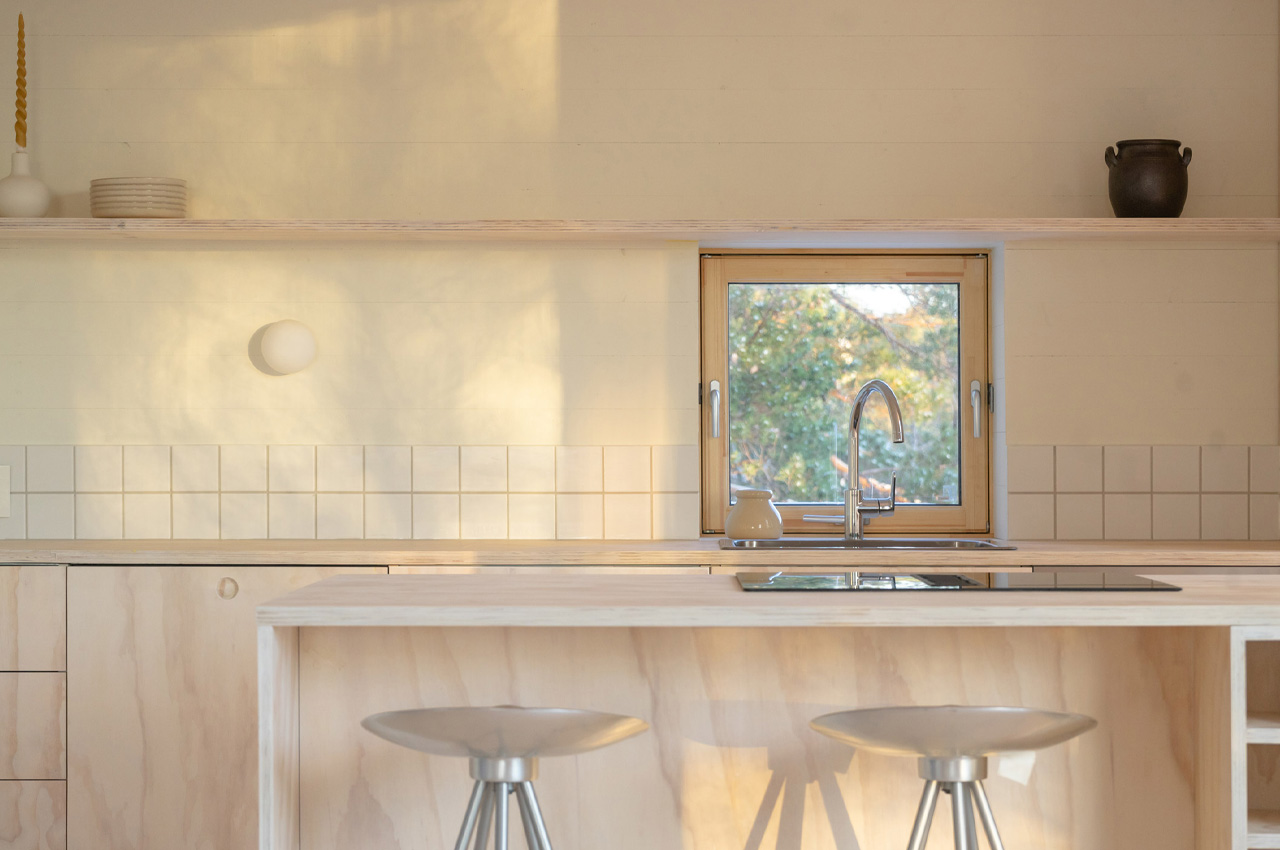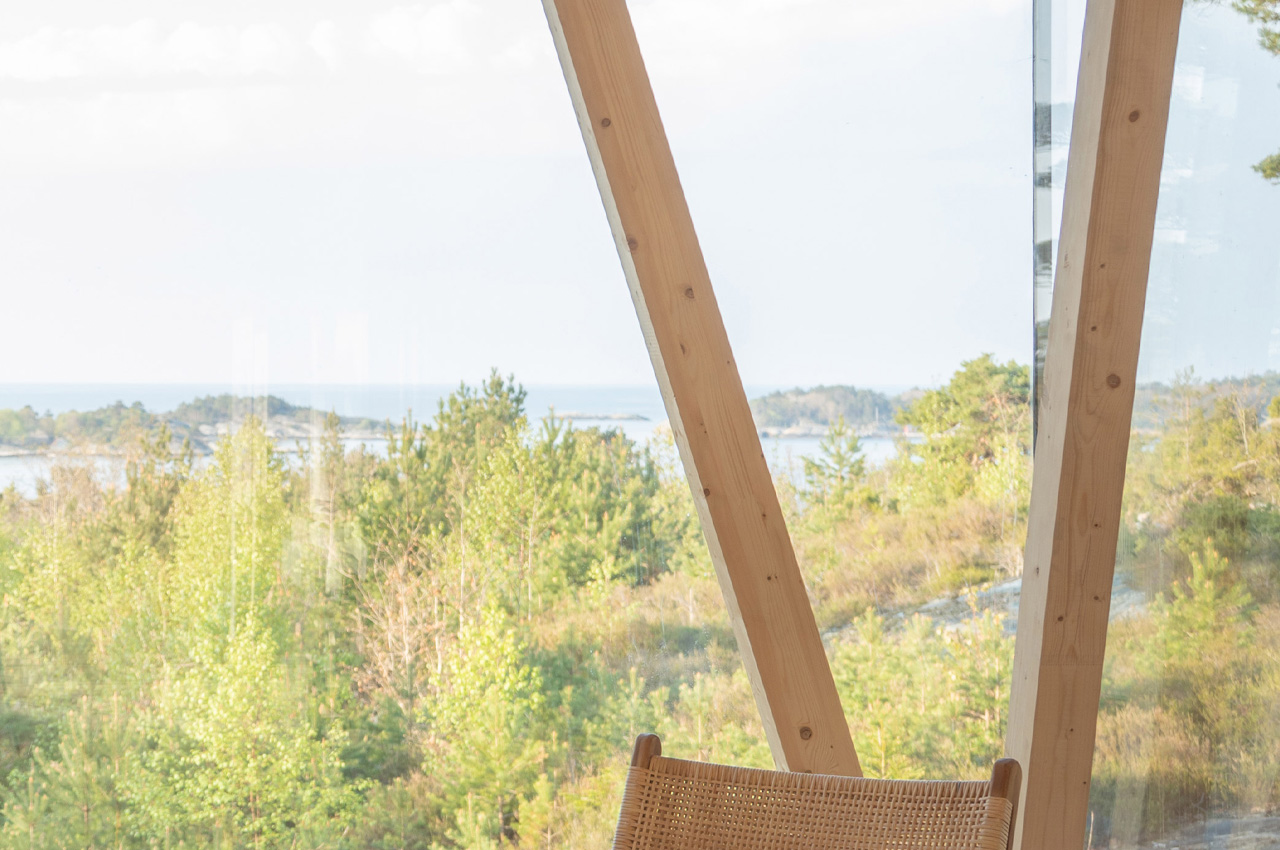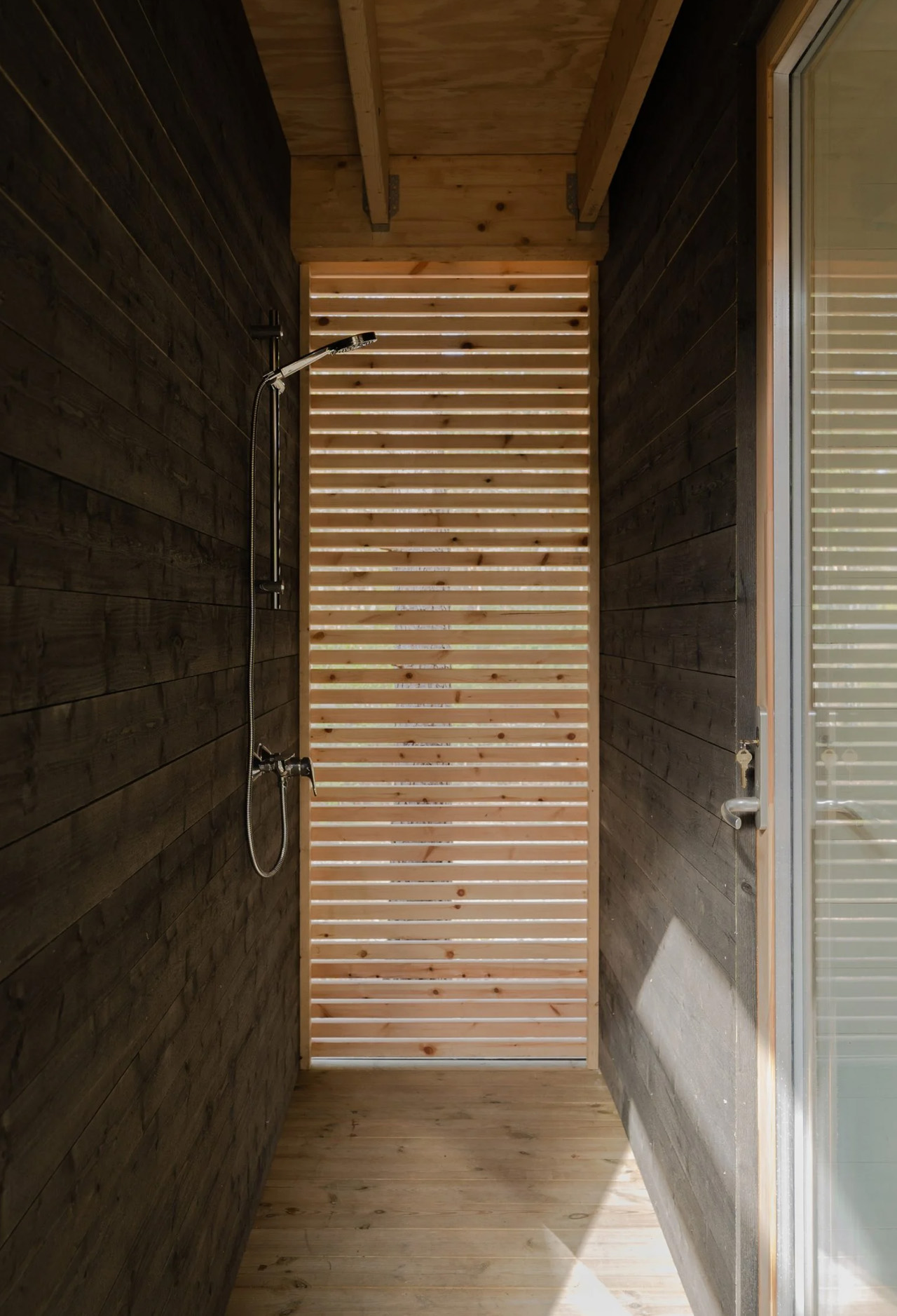
Meet the all-new Saltsaun NW trailer, a sauna that you can hitch up and tow anywhere with you. You can use the sauna in your backyard, or wherever you like. The NW trailer is influenced by the covered wagons that used to roam Oregon, and it is designed to be a versatile on-/off road trailer, allowing a Himalayan salt-lined cedar wood sauna to be attached behind any vehicle. There is an option of an electric or wood stove, for when you’re traveling on or off-grid.
Designer: Bend Teardrop

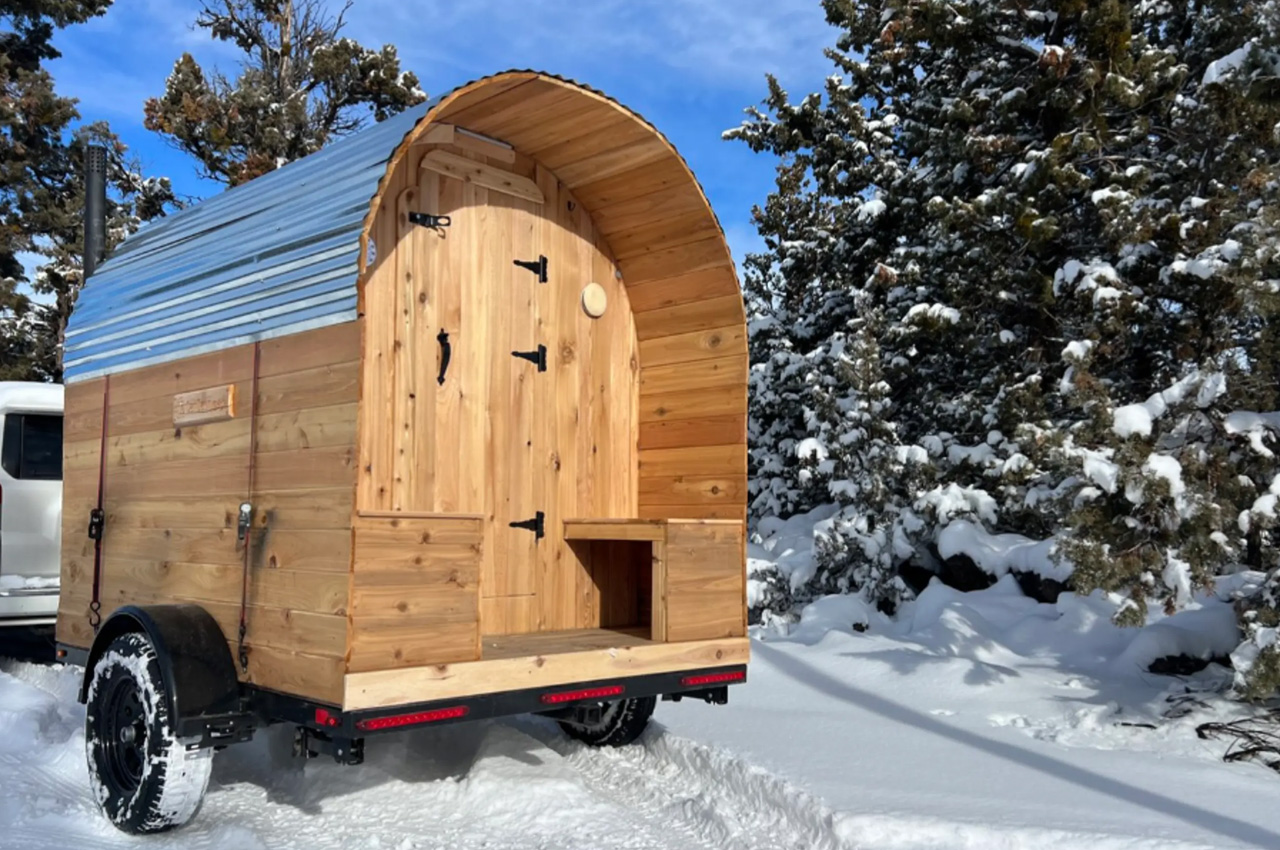
The Saltsaun NW trailer isn’t the first of its kind, but it does have a very appealing and unique design with impressive amenities and capabilities that truly set it apart. The trailer consists of a highway-speed-capable and off-road-ready square-tube chassis that measures 6×8 feet. The trailer measures 13 inches and rides on 15-inch wheels. The roof of the Saltsaun NW features the design and construction skills we saw in the teardrop trailer by Bend, which creates a rounded-roof body, quite similar to a solid-roofed covered wagon.
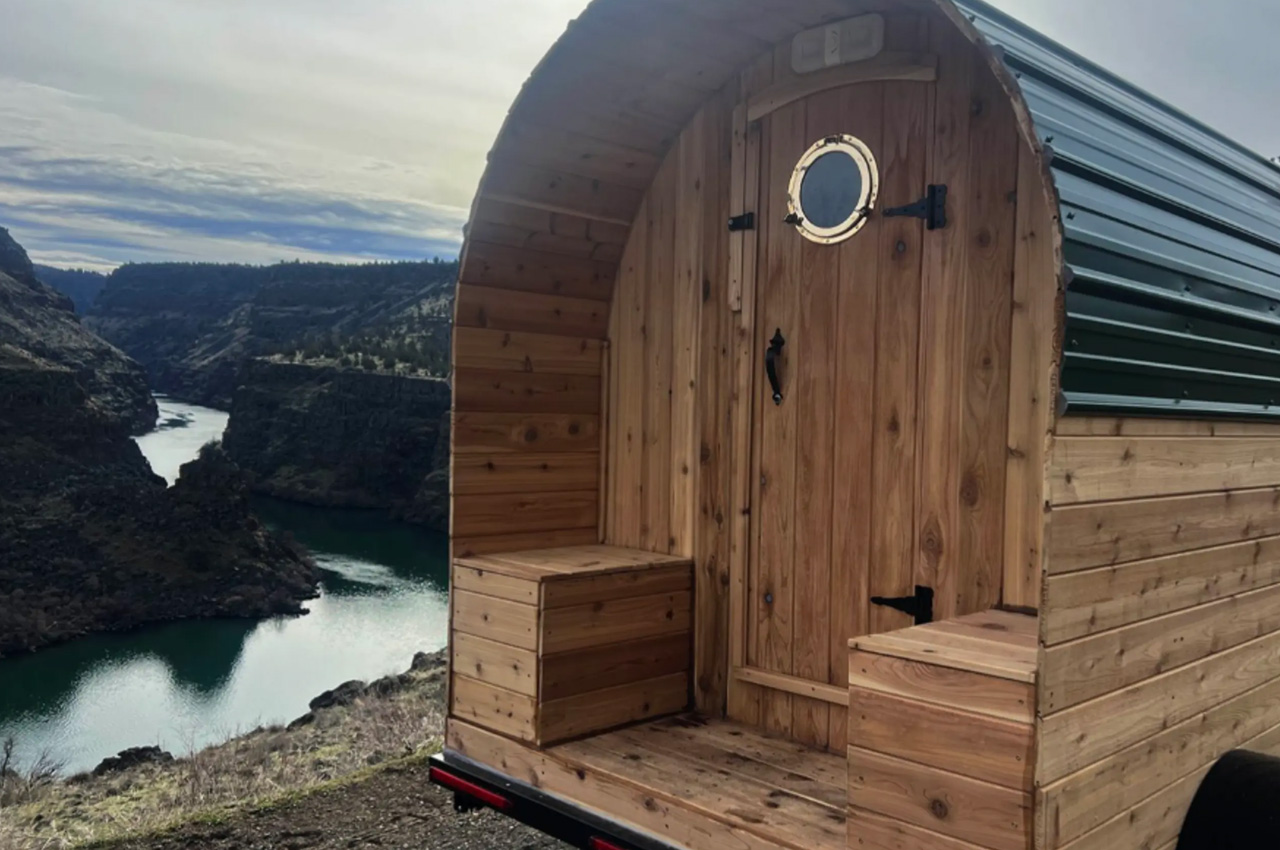

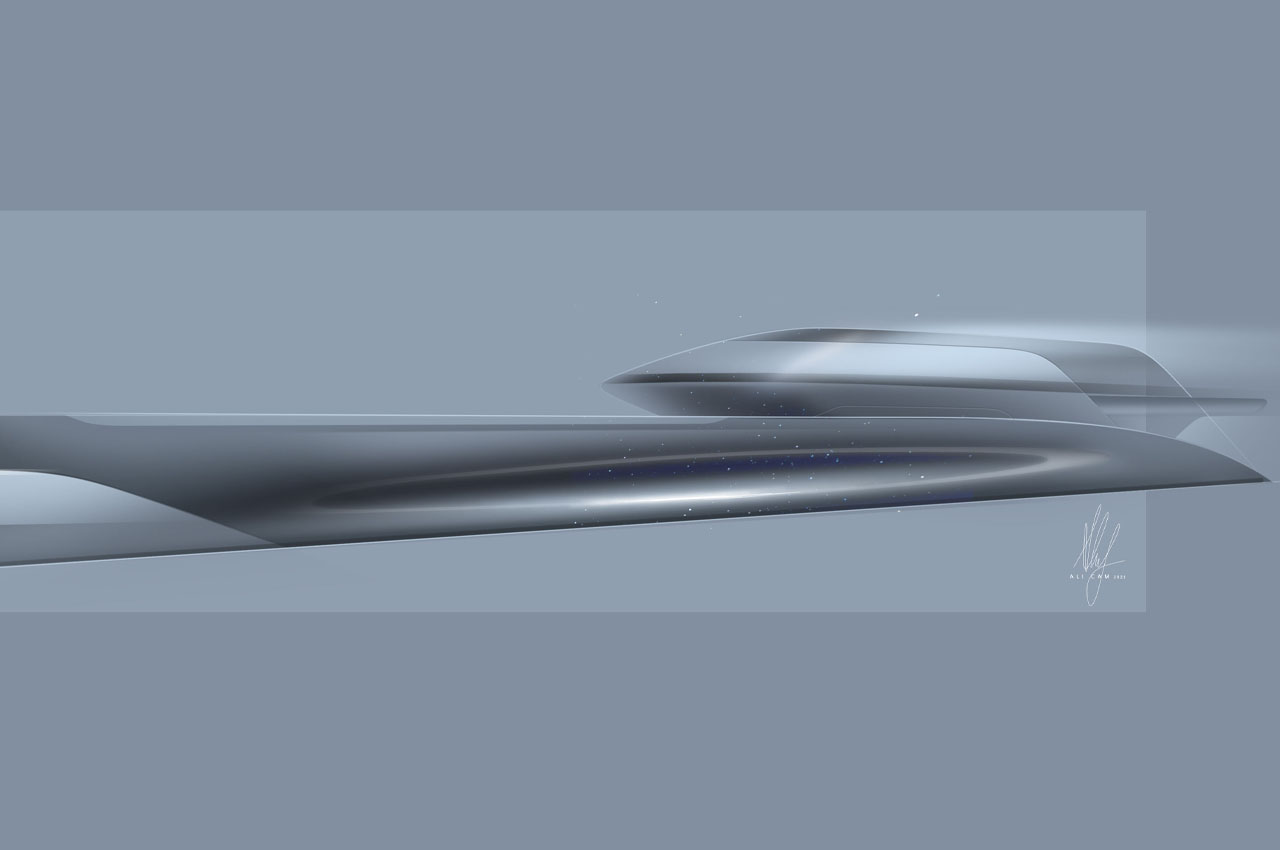
The trailer is made from cedar wood locally sourced in the Pacific Northwest. It features a large checker plate panel up front, with aluminum paneling below, and a corrugated metal roof scaffolding that provides protection to the wood from the hazards of road and weather. The roof also shelters a small porch with two integrated seats which are designed for cooling off.
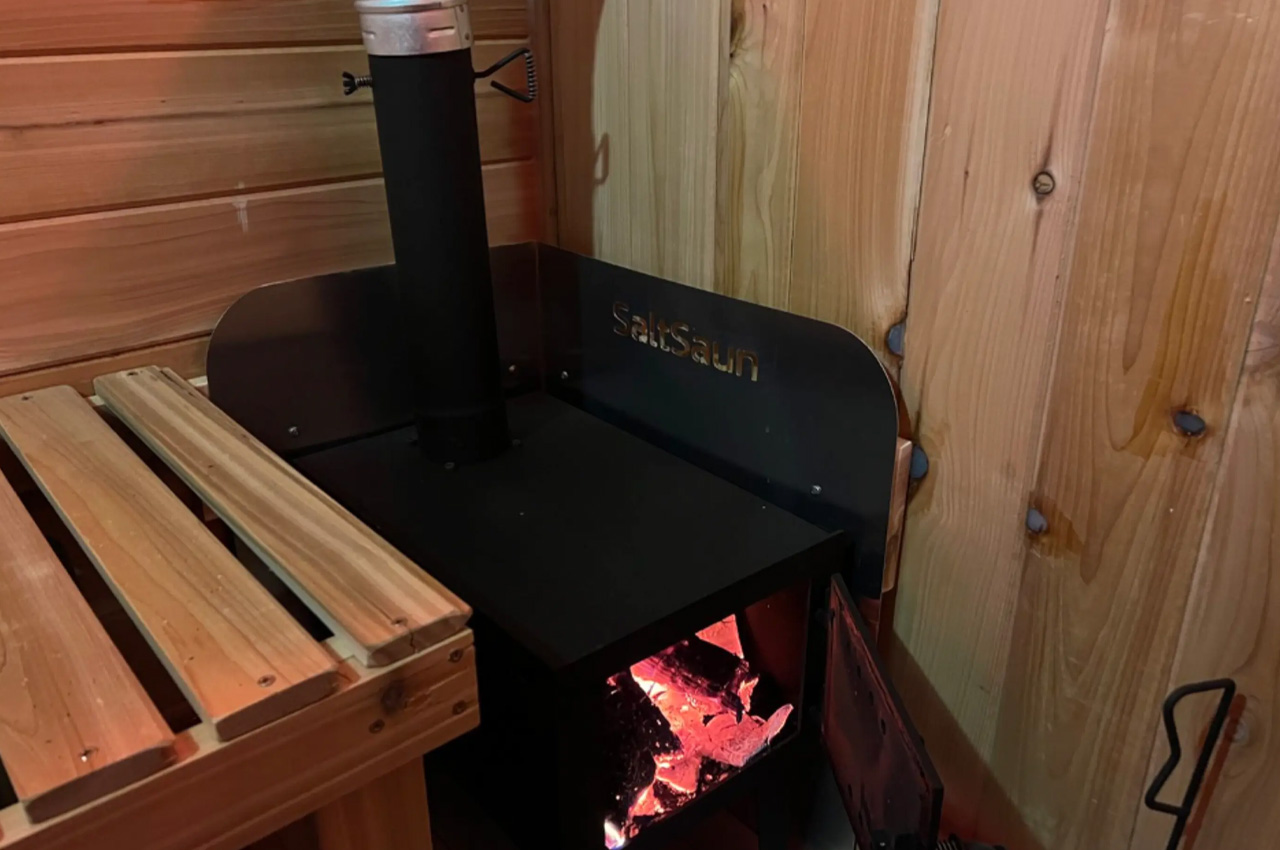
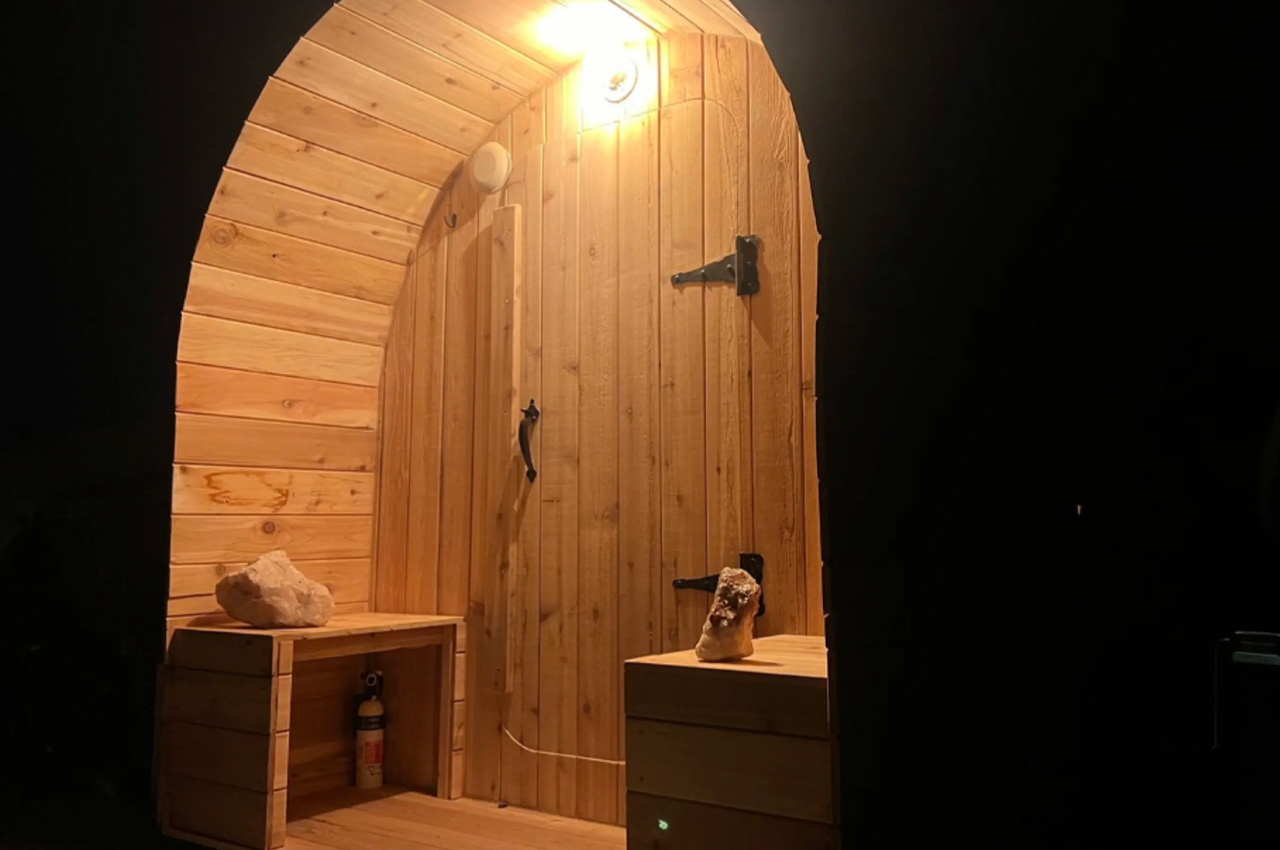
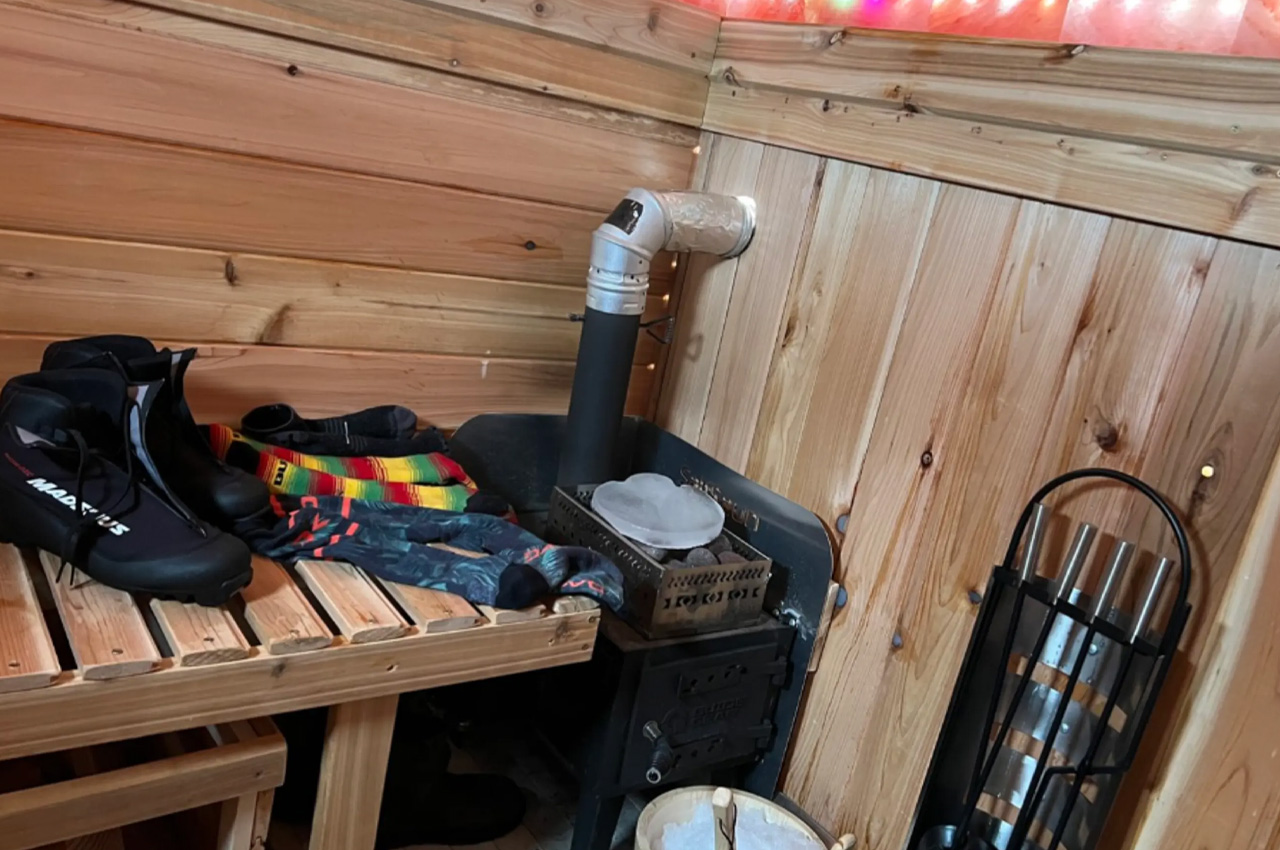
The Saltsaun NW trailer can house four to five adults on its benches. The focal point of the design is the electric or wood stove that can set the temperature between 100 and 200 °F (38 to 93 °C). The trailer’s electric model features a 3-kW steam-ready heater that can be plugged into a 110-V outlet with a recommended 20-A+ output., whereas the wooden stove model is intended to be an off-grid solution, and it is equipped with a rock basket for steaming, as well as a deep-cycle battery, and 100-W solar panel for the interior/exterior lighting.

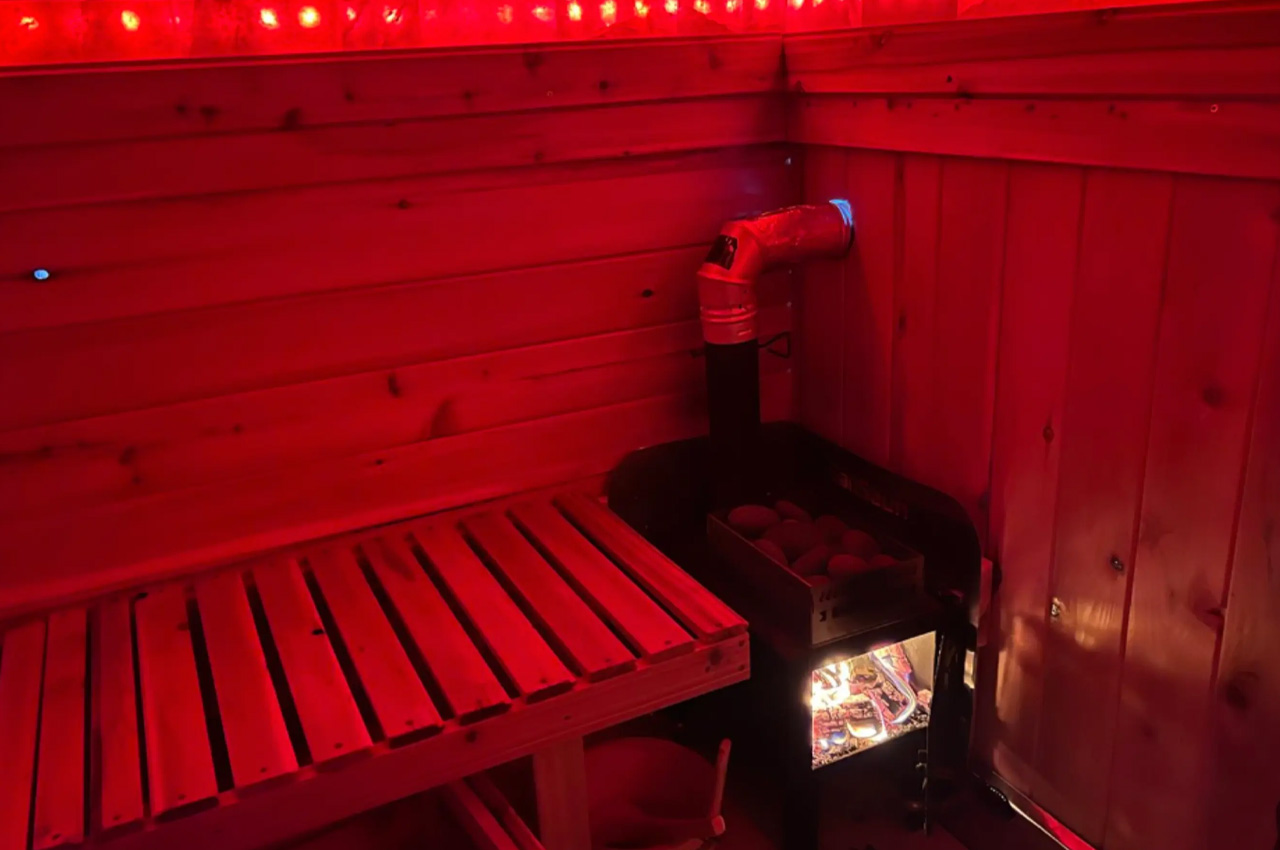

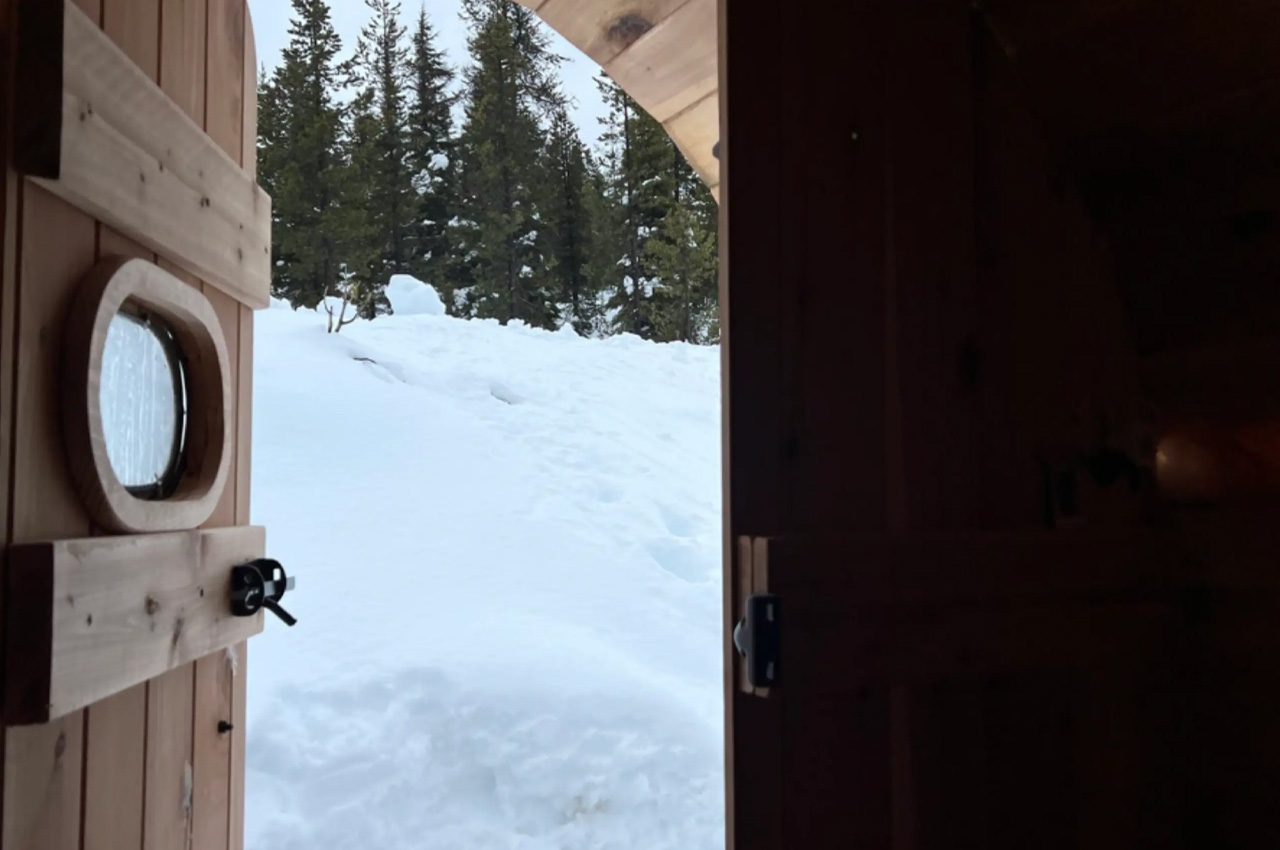
The post The Saltsaun NW Trailer Lets You Have A Sauna Anywhere And Everywhere You Go first appeared on Yanko Design.
